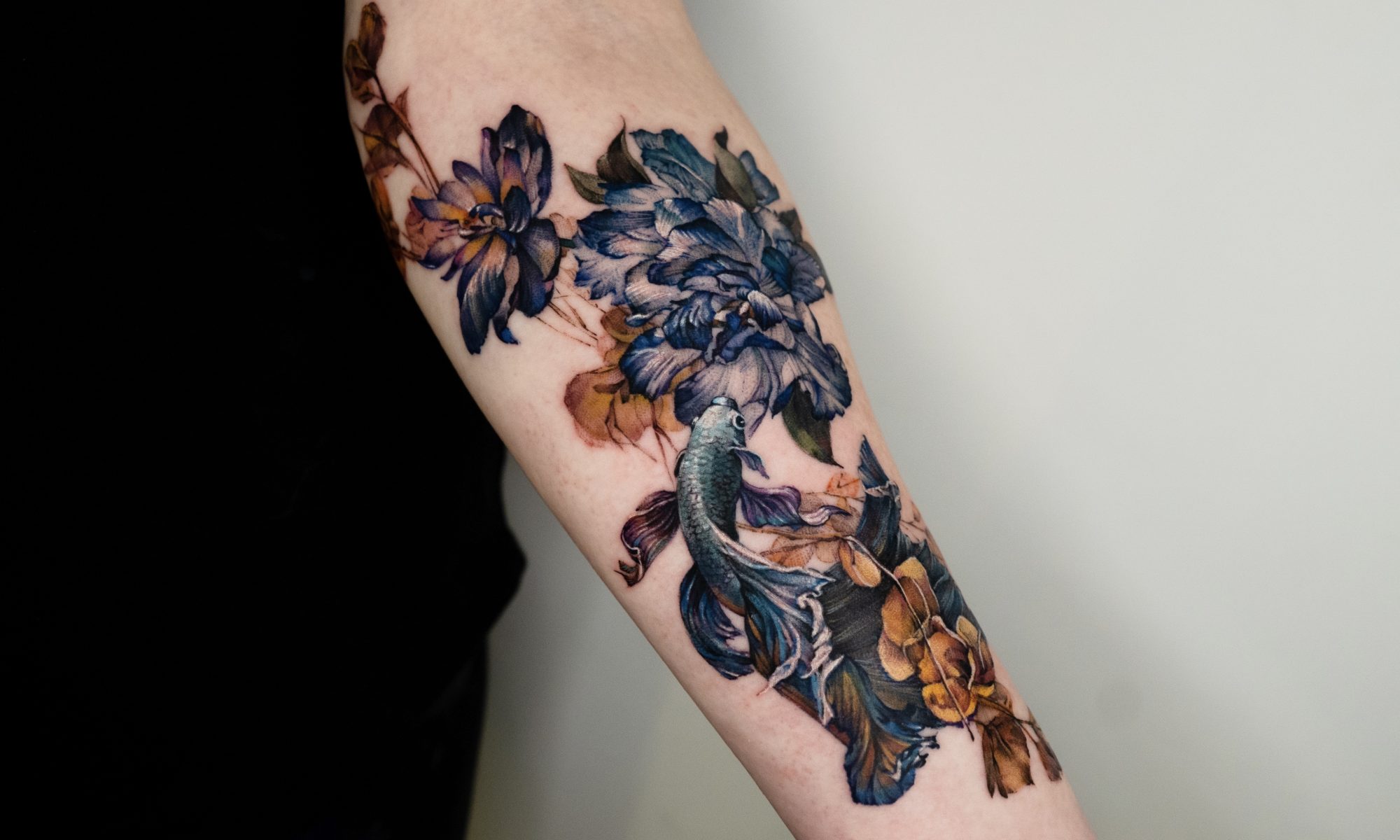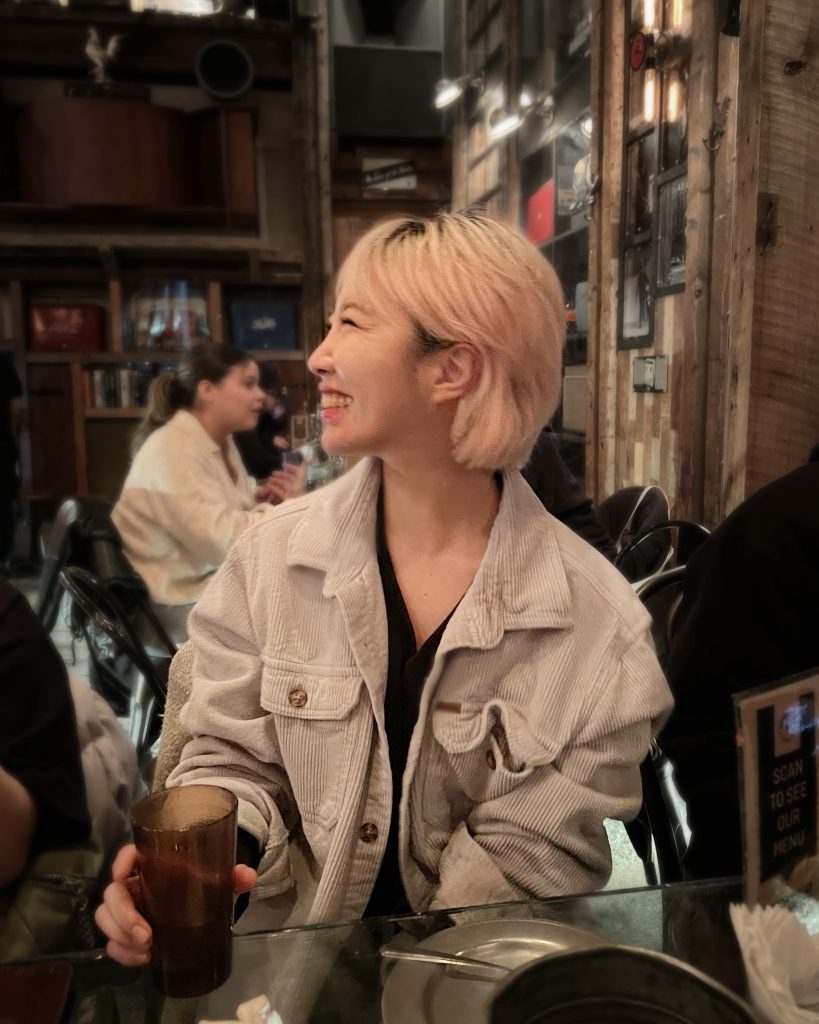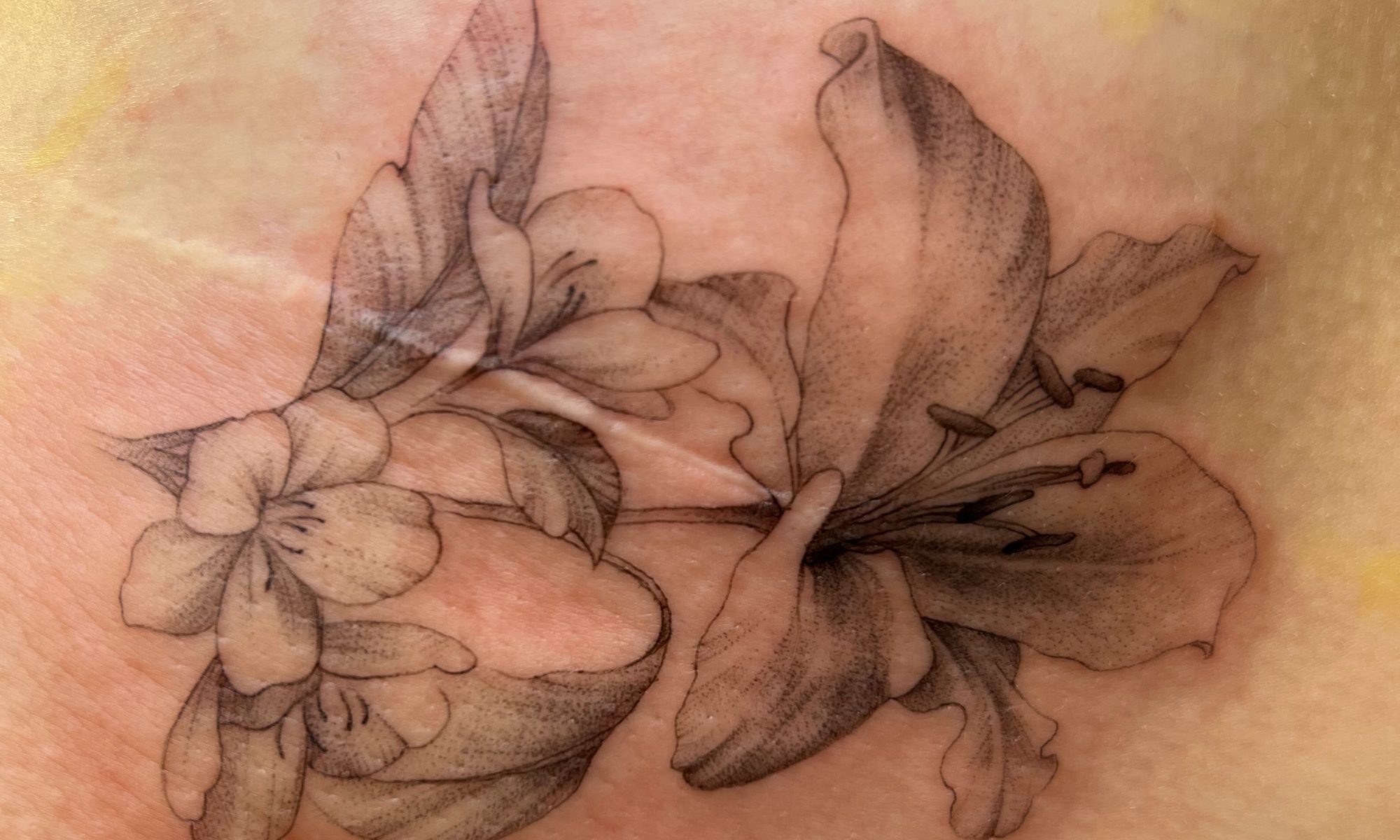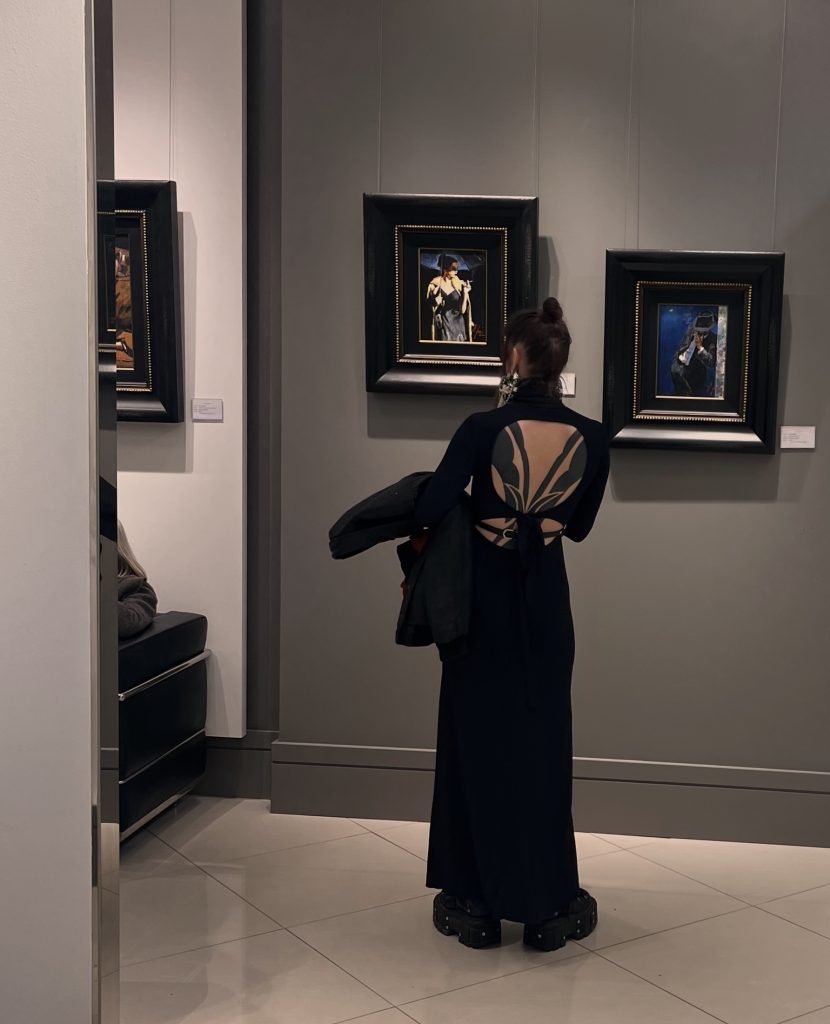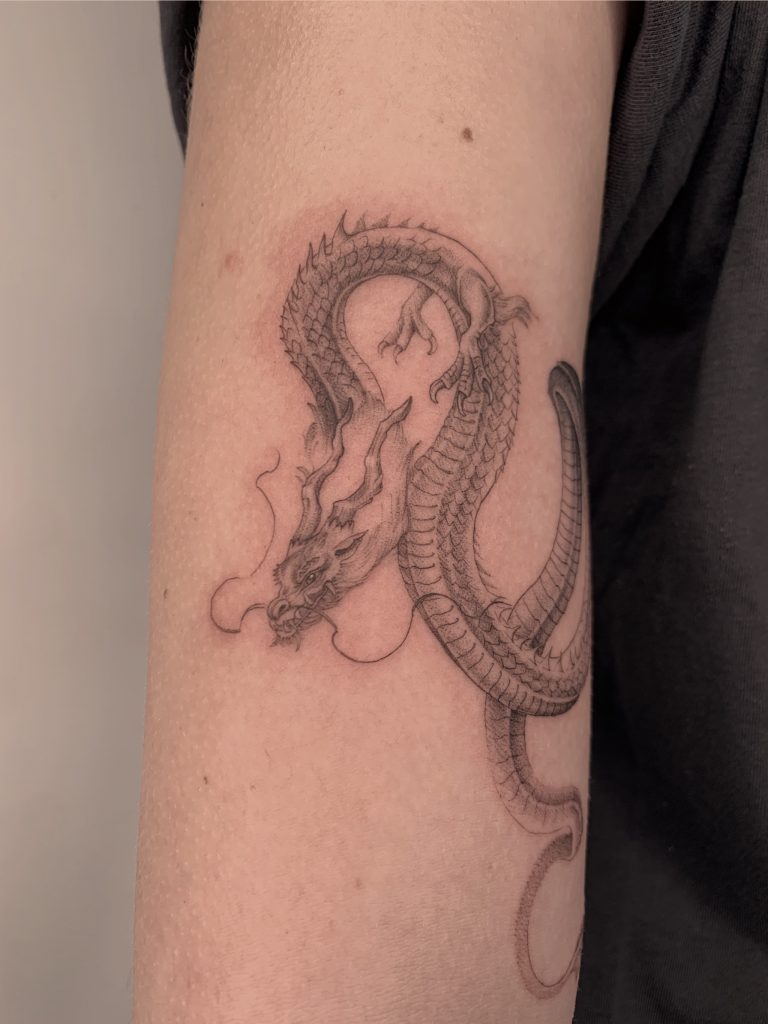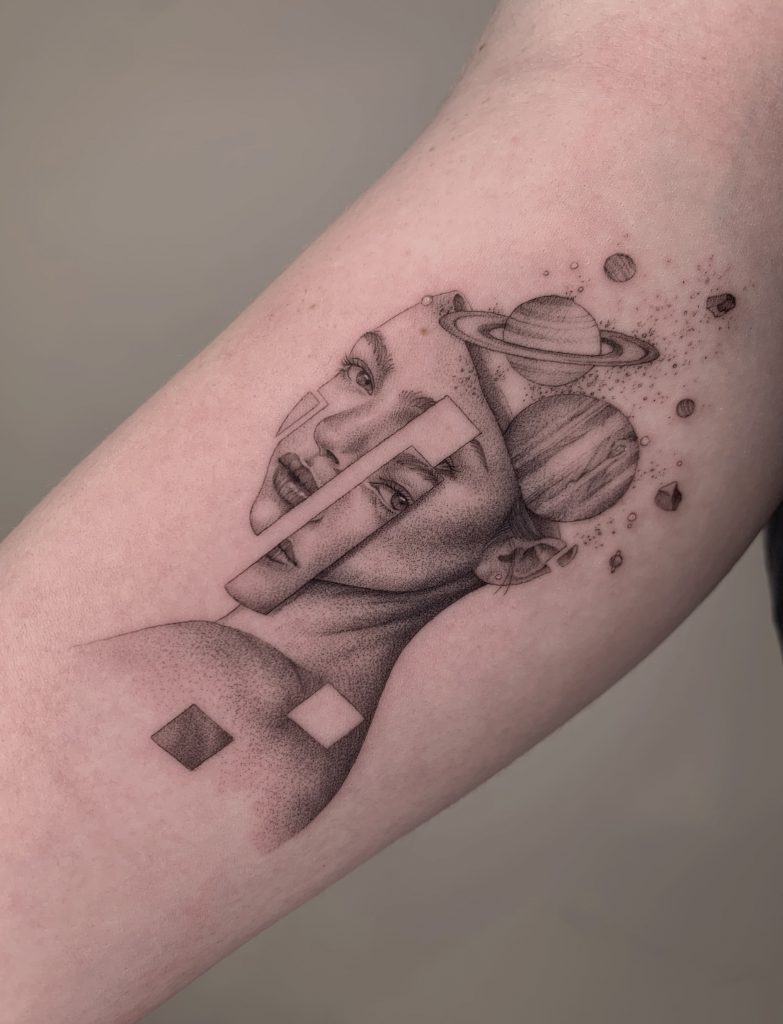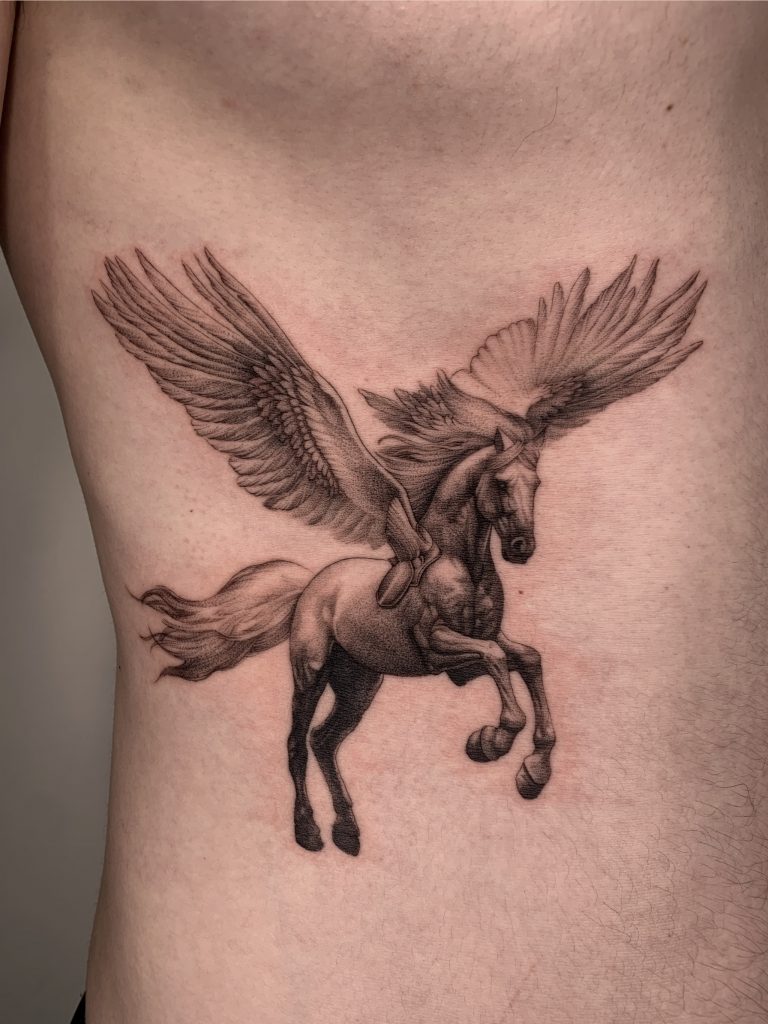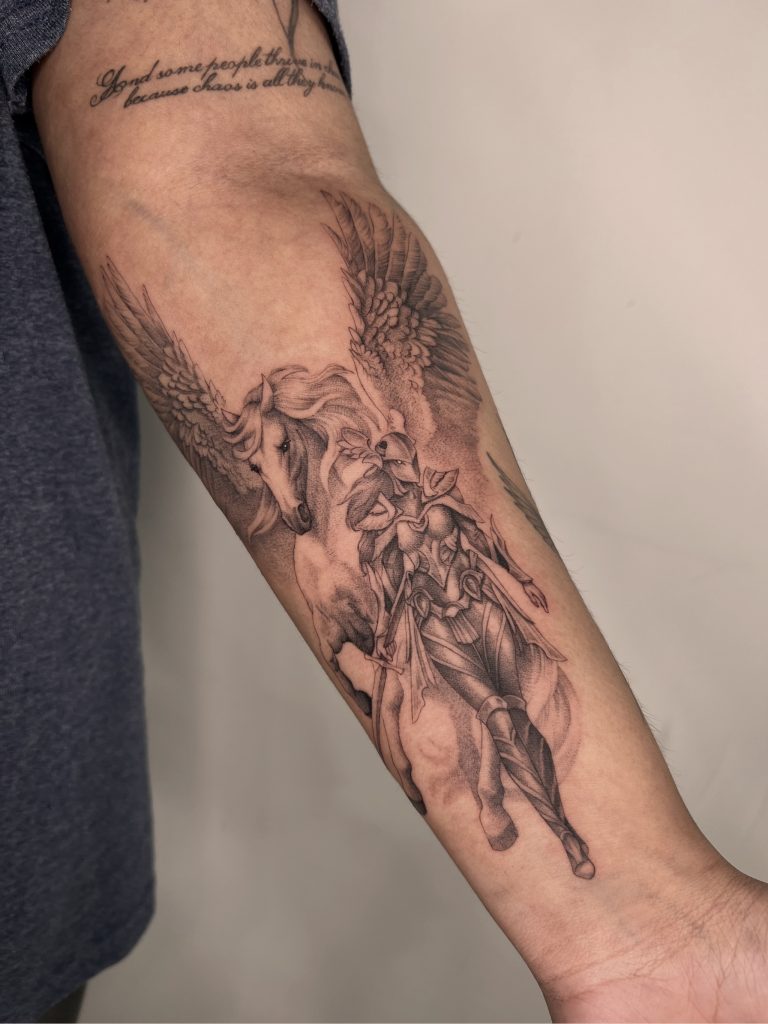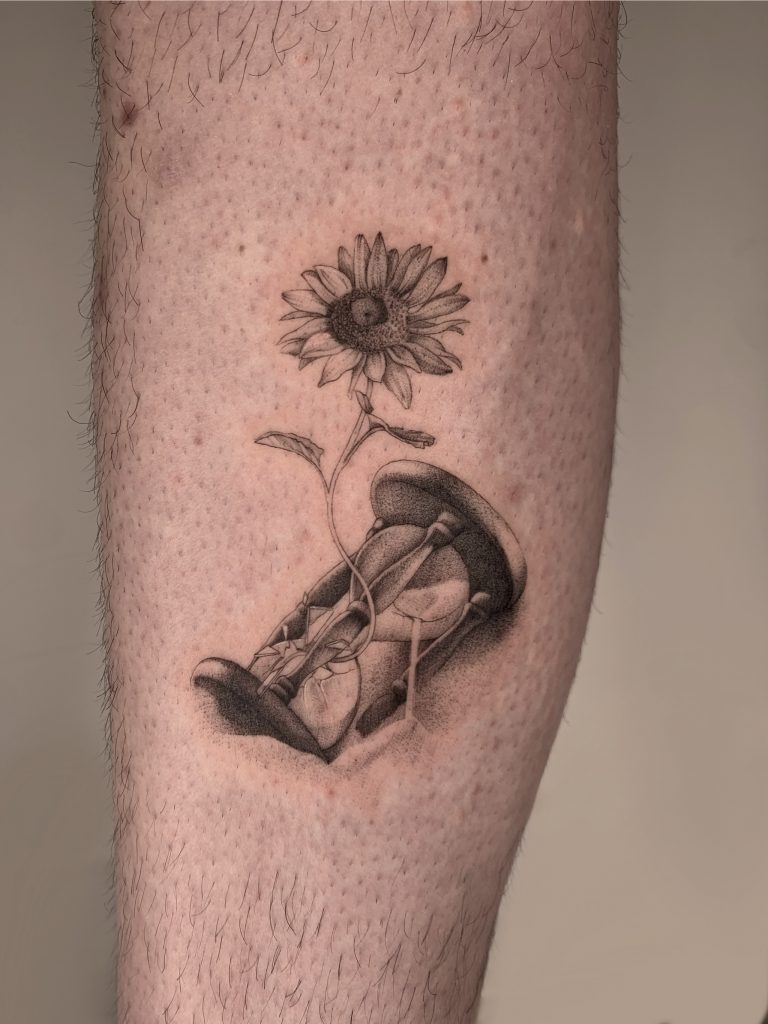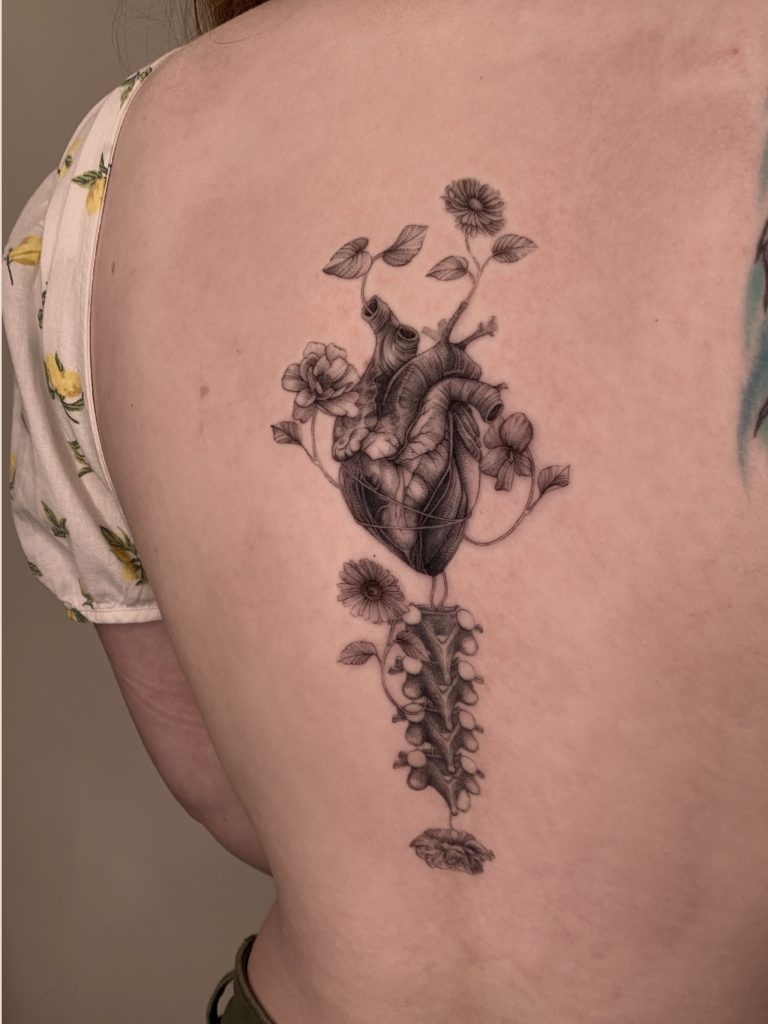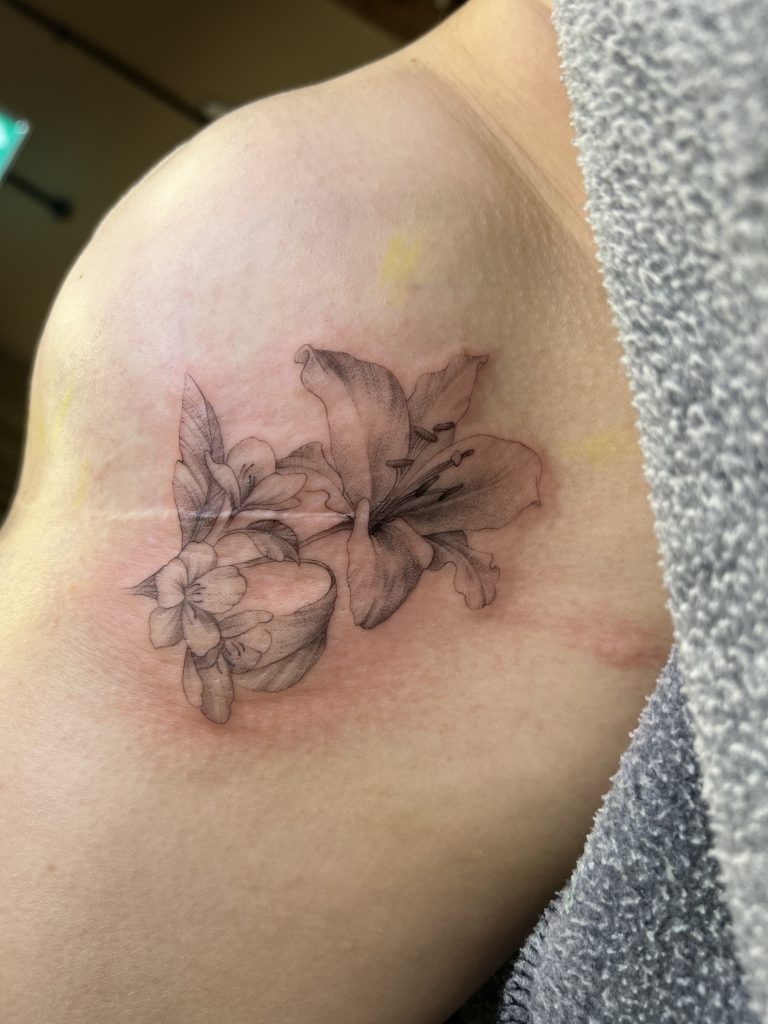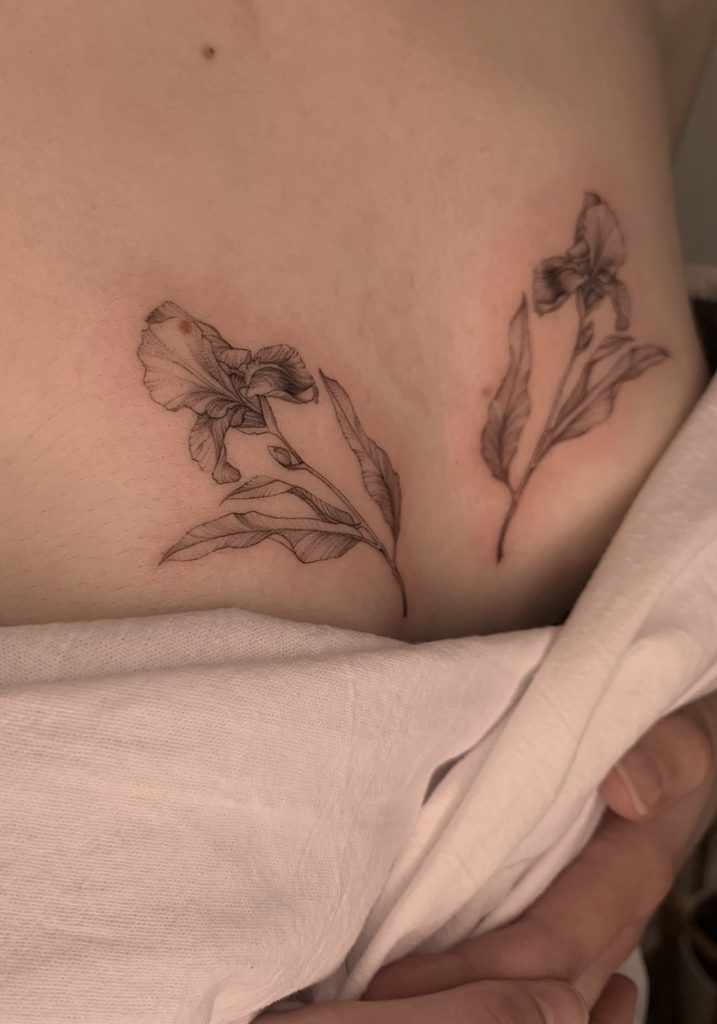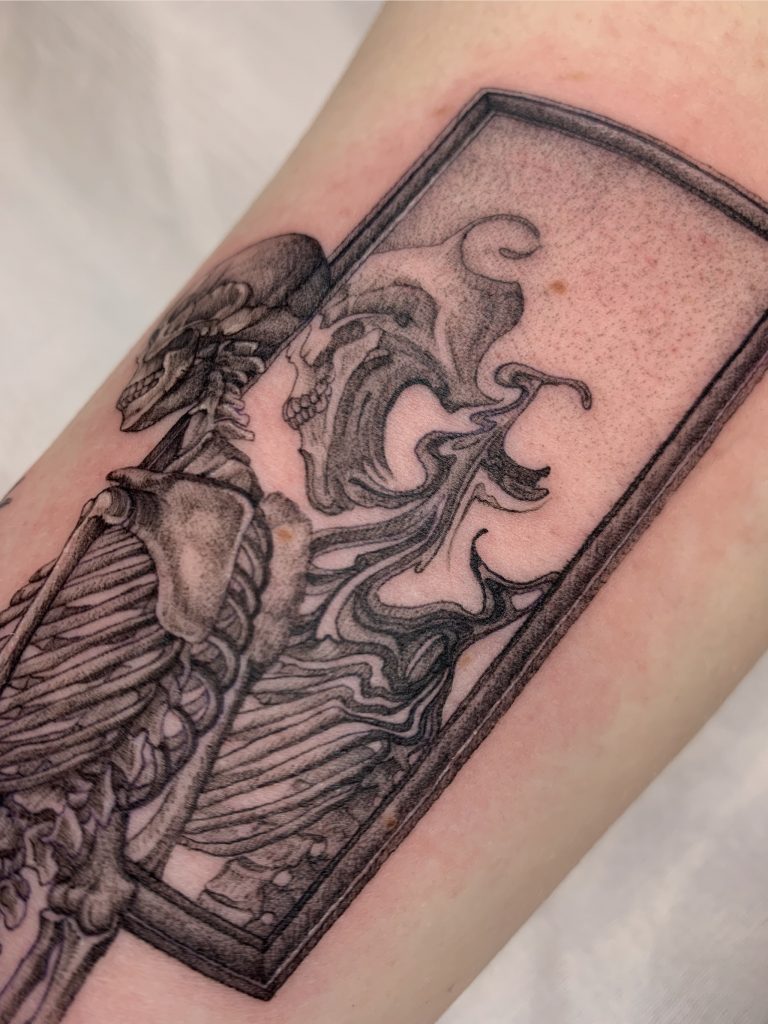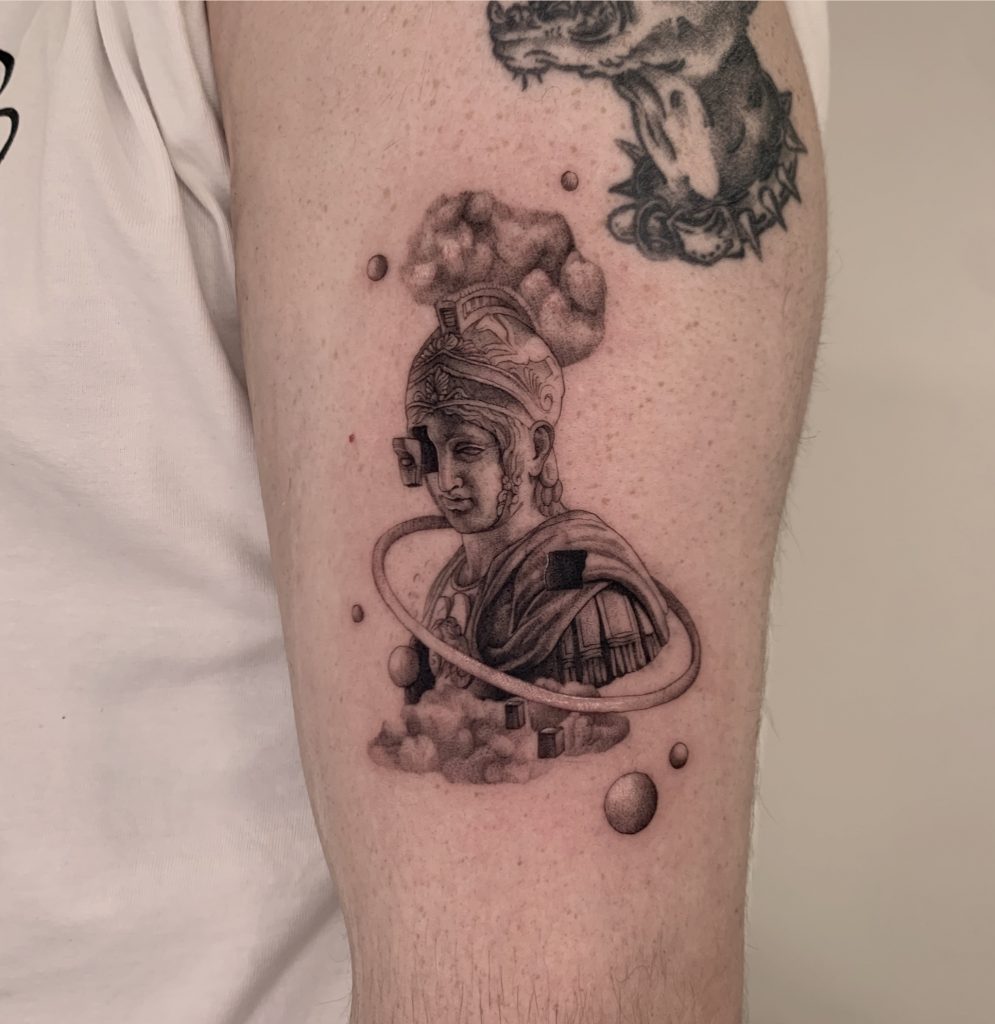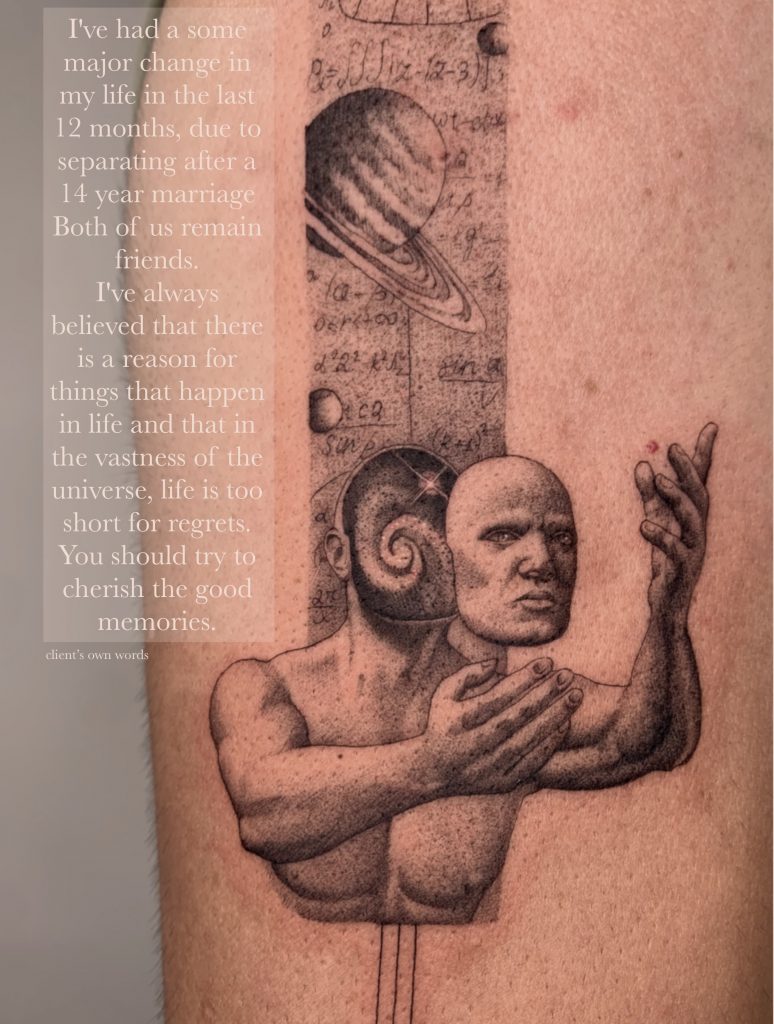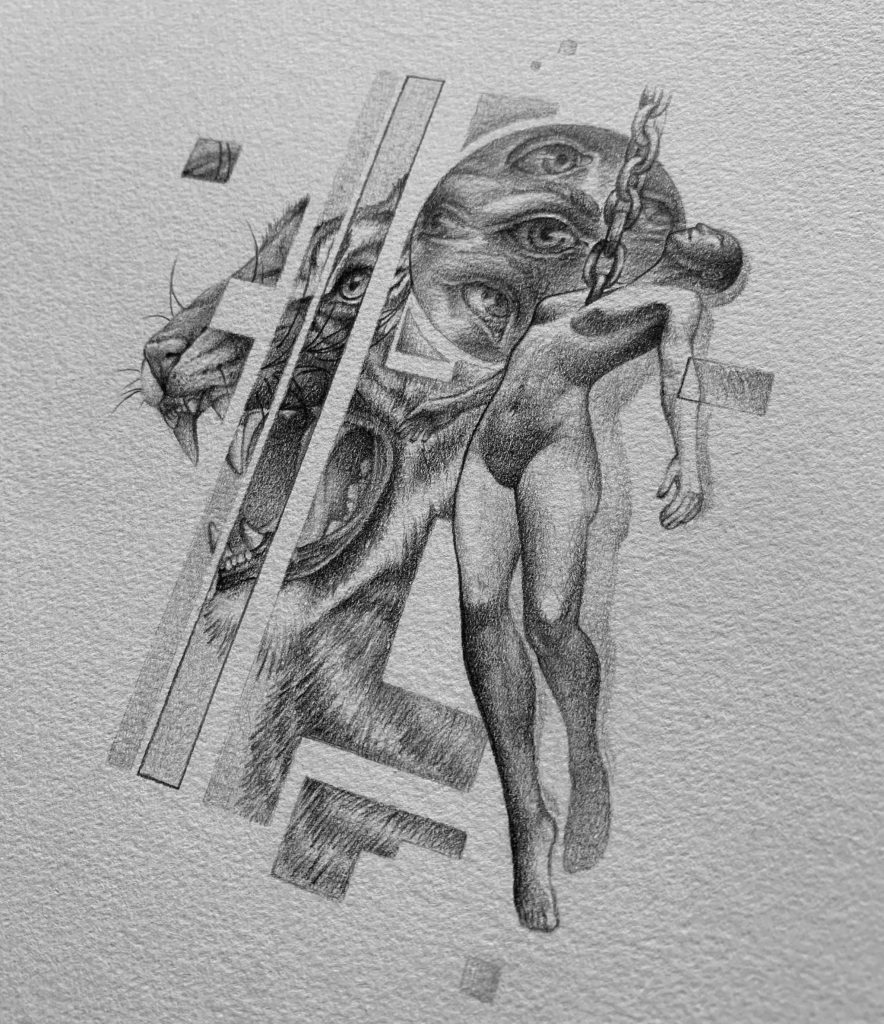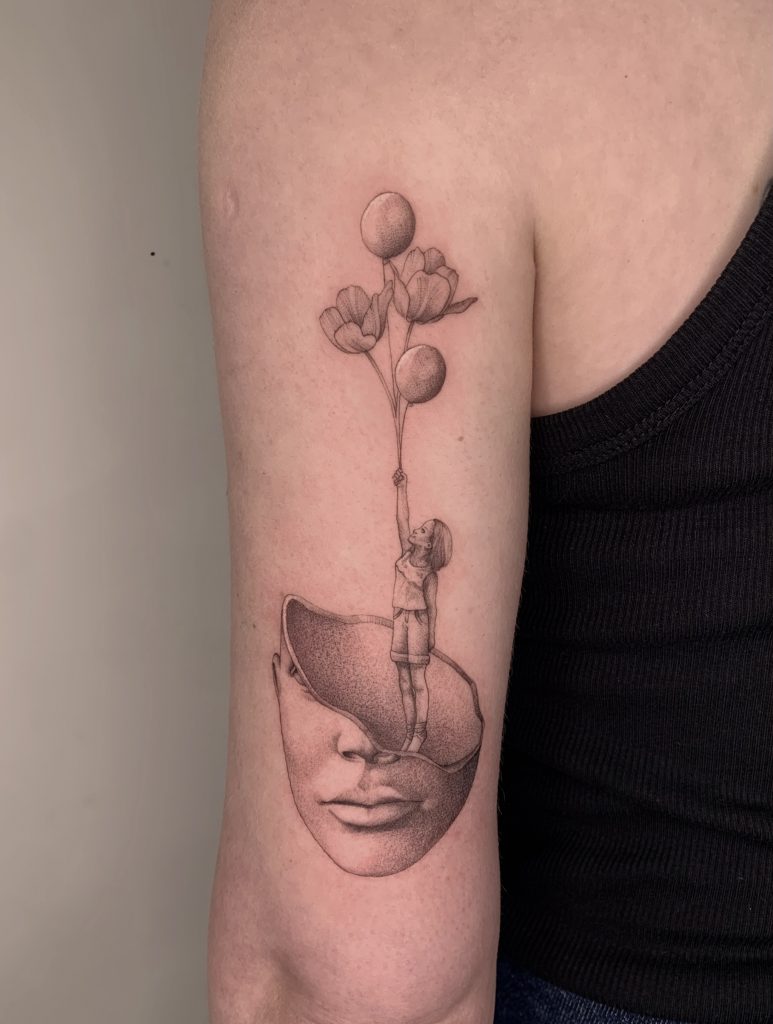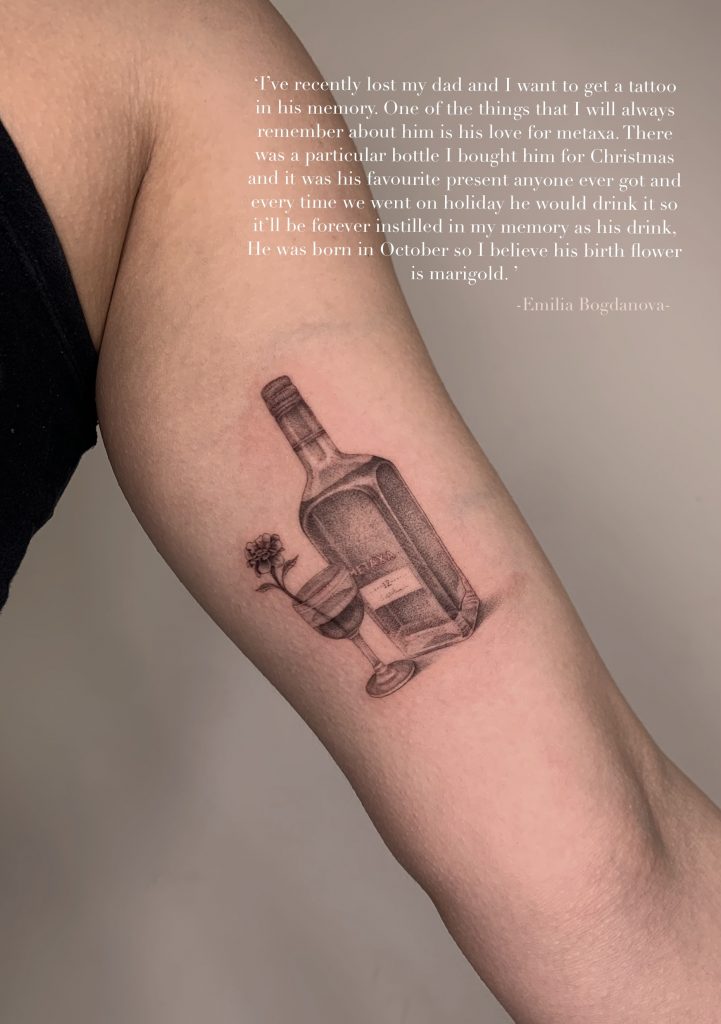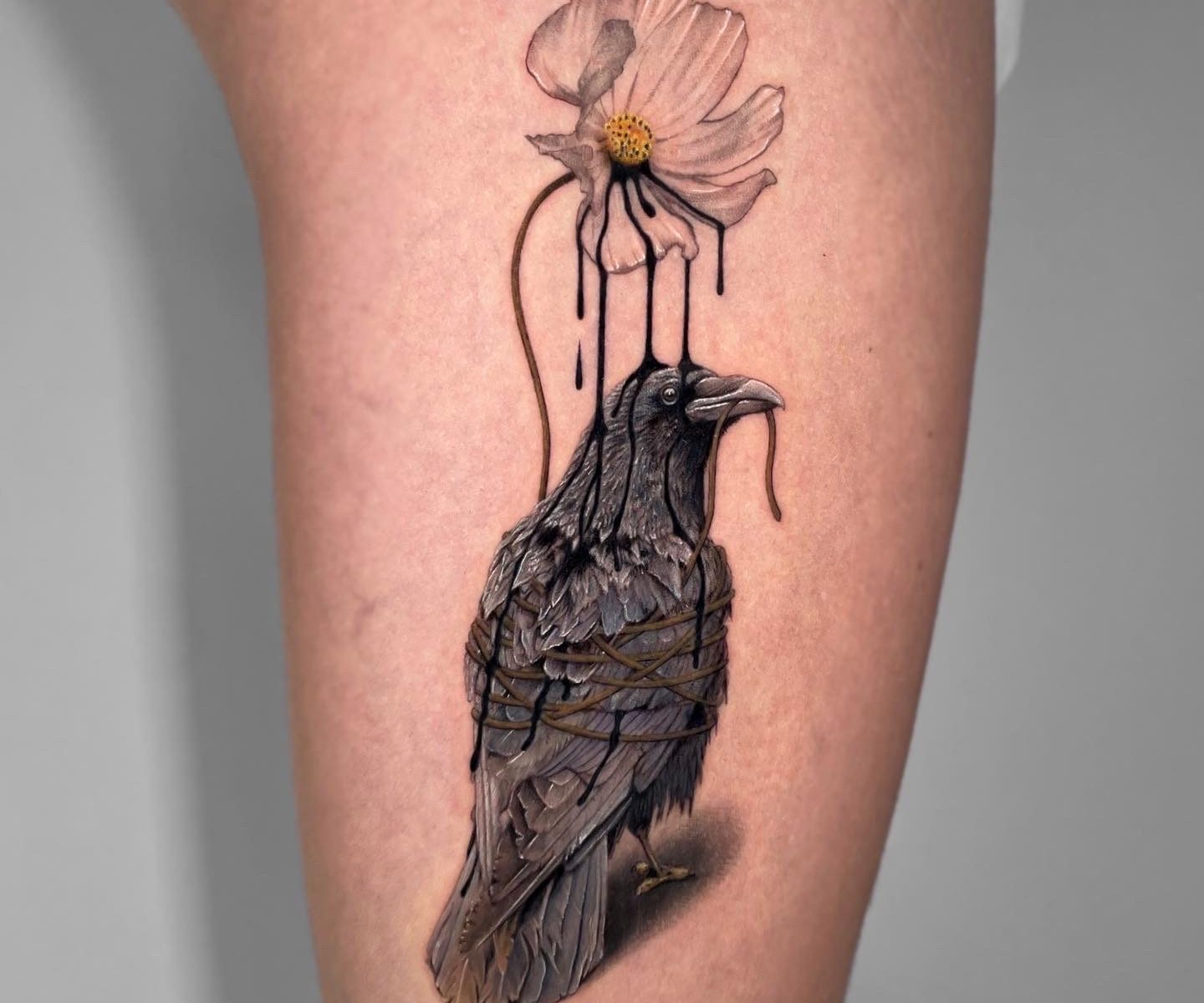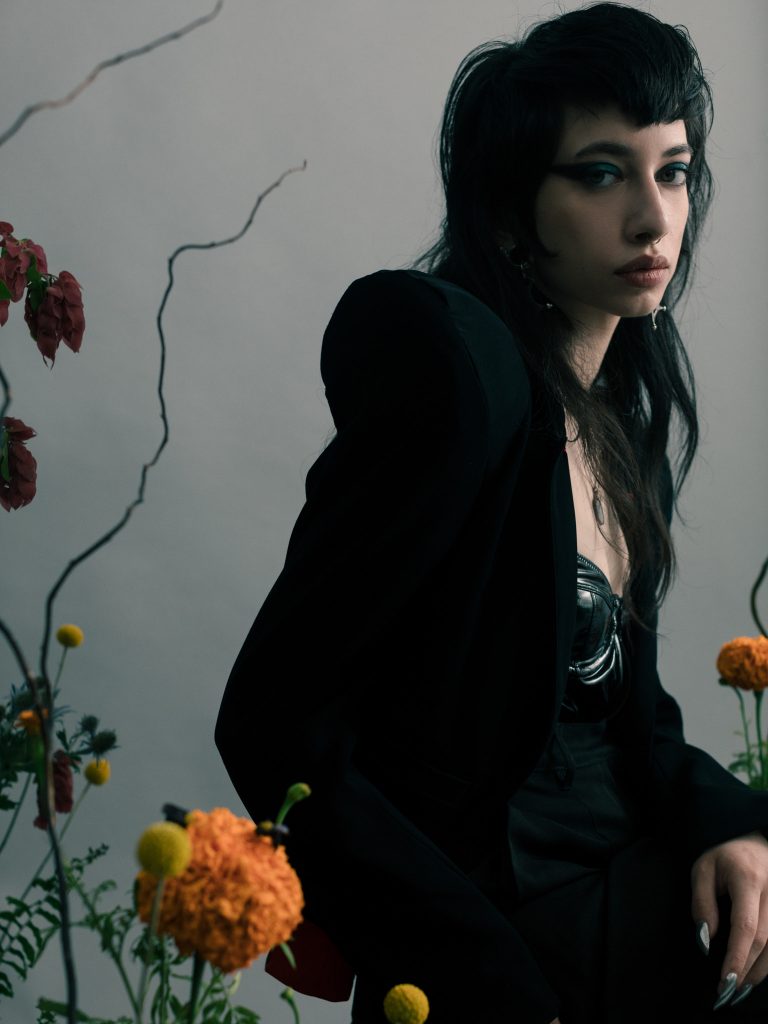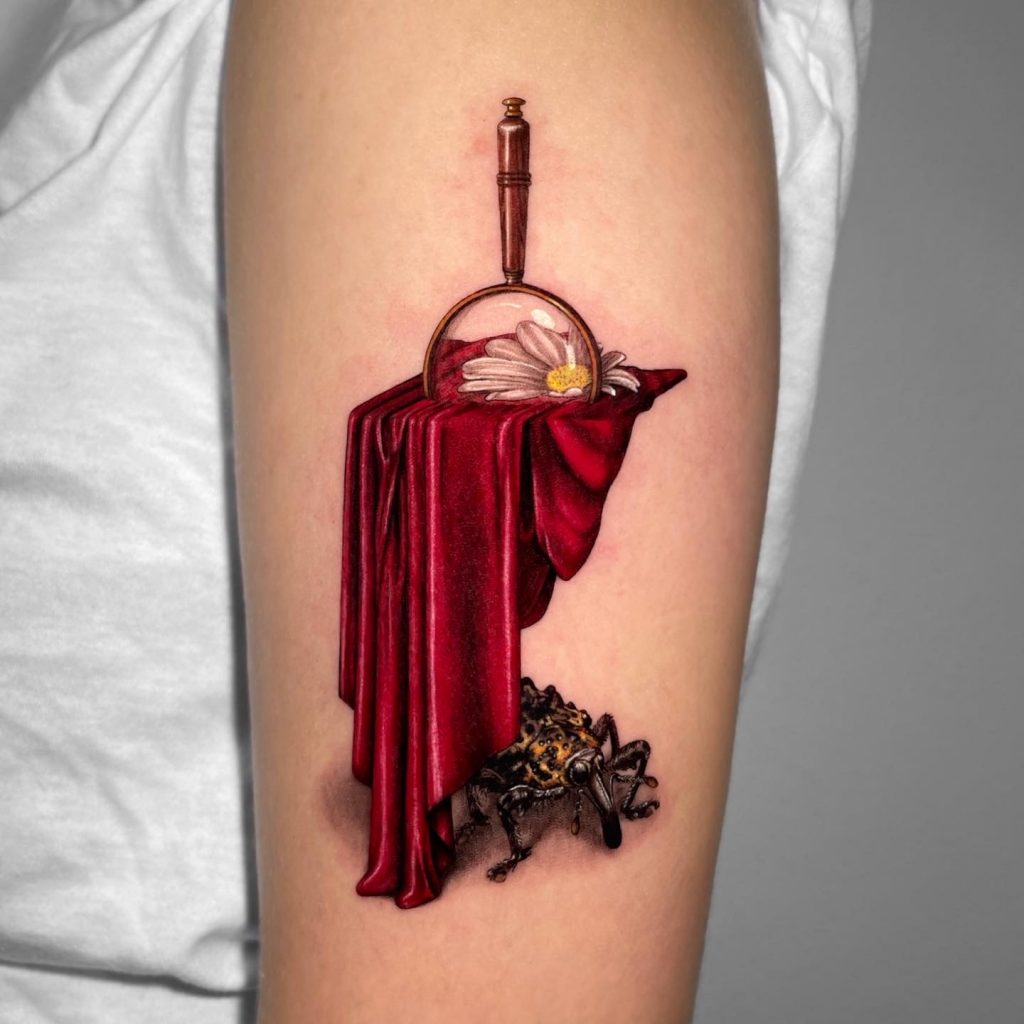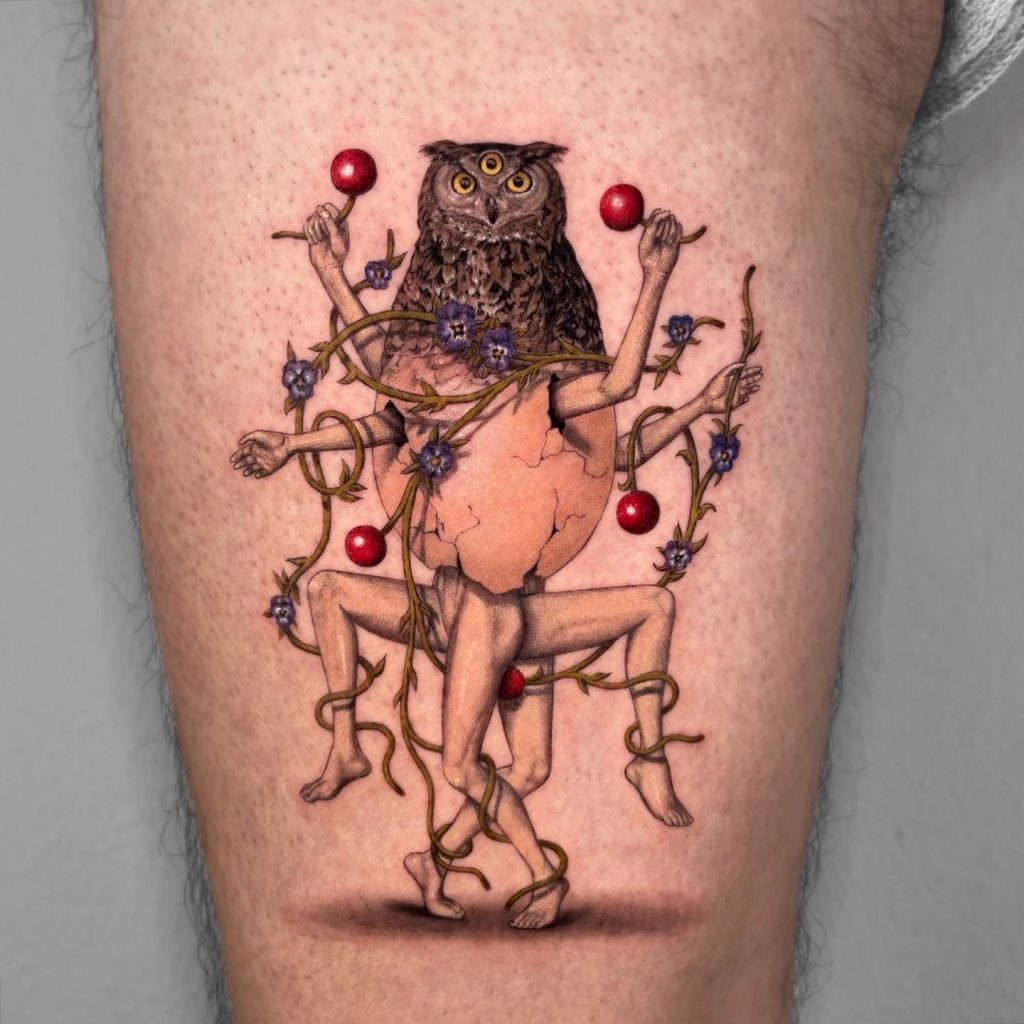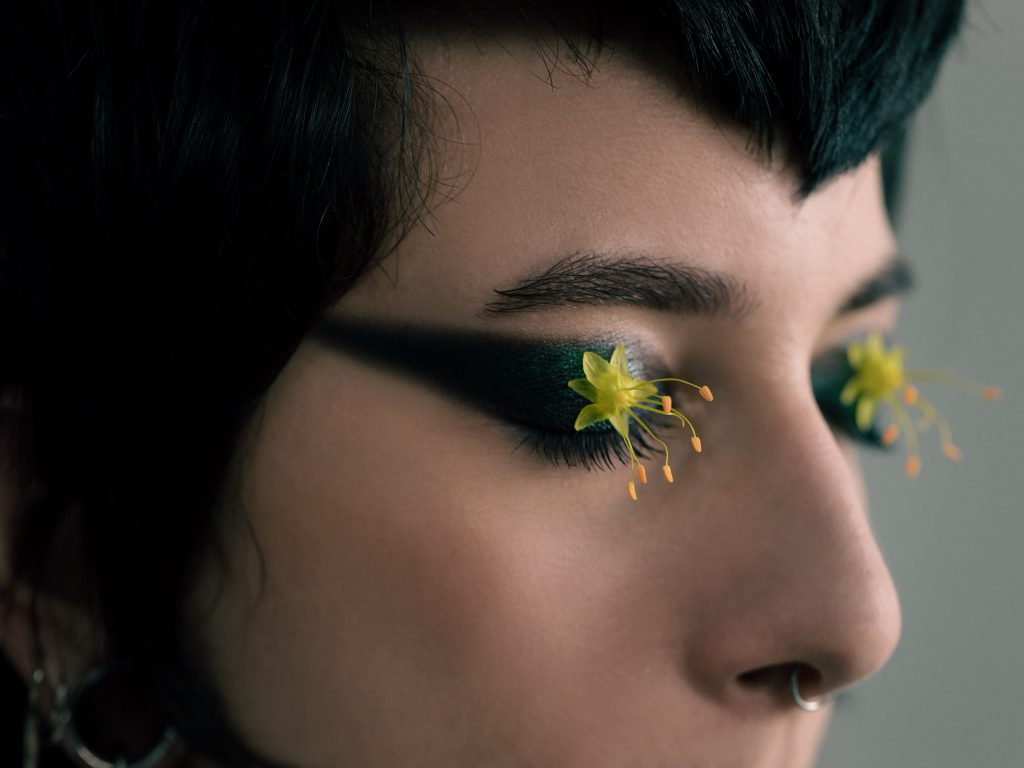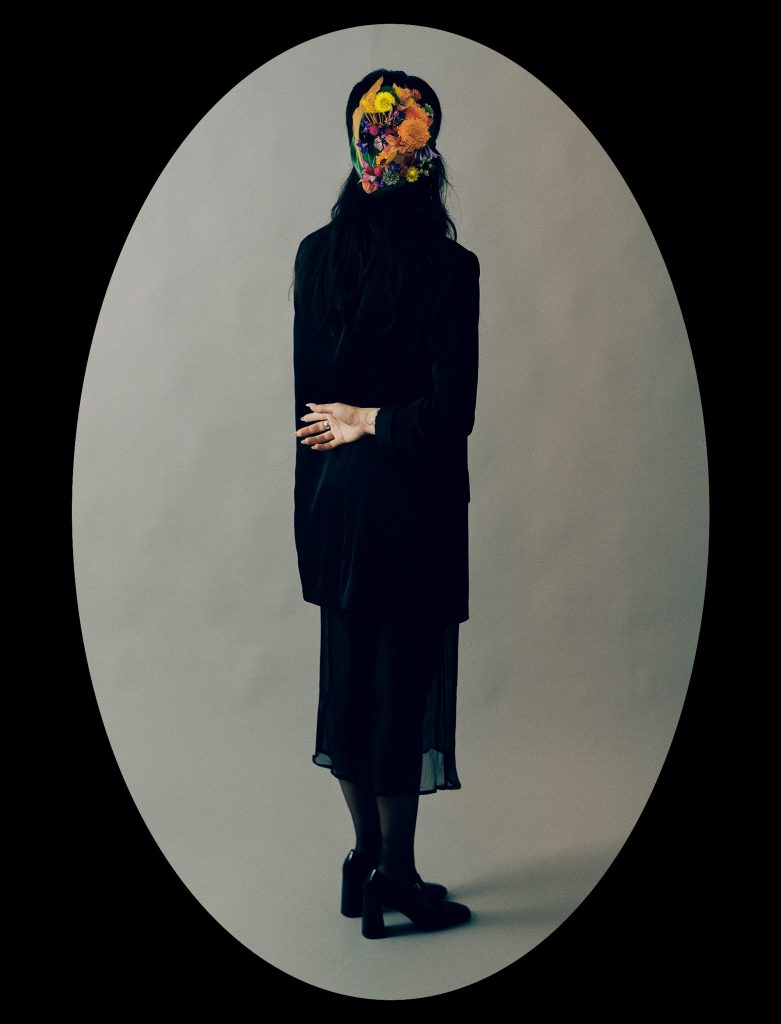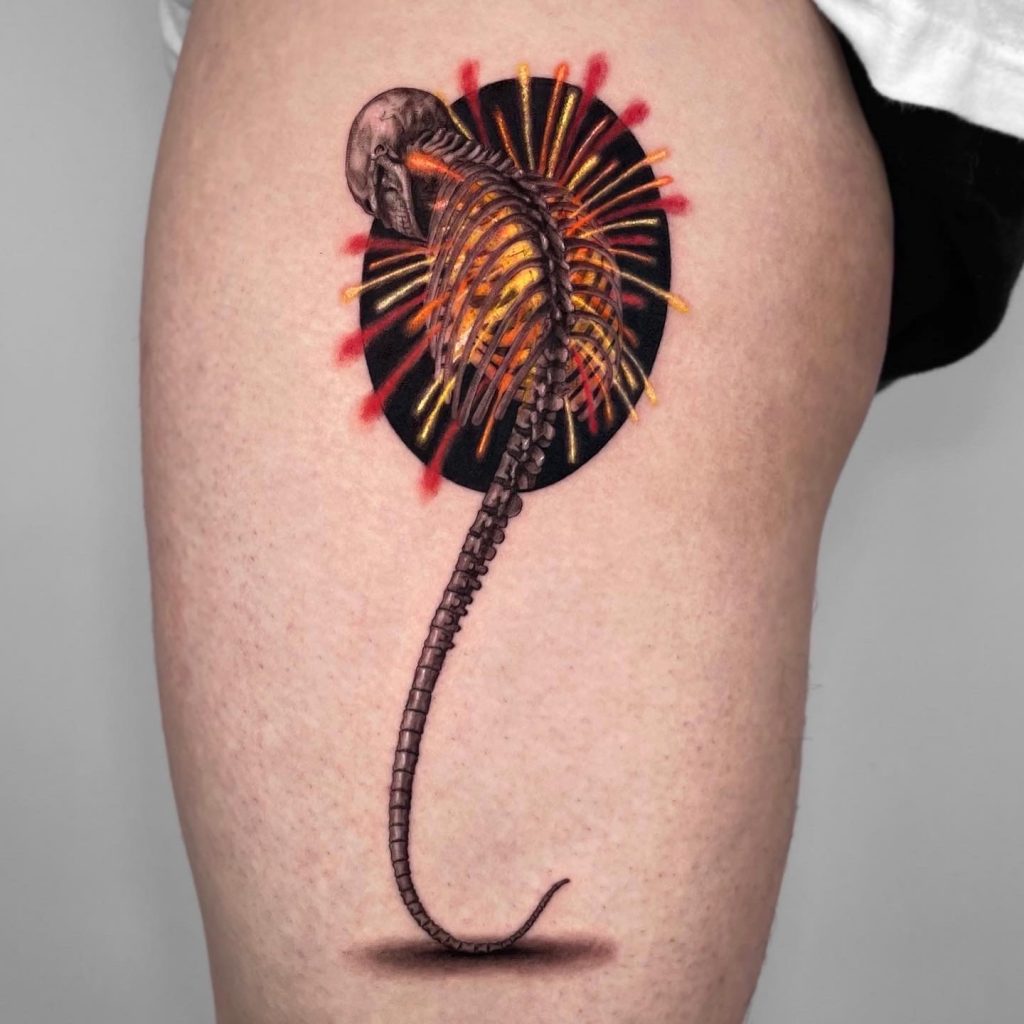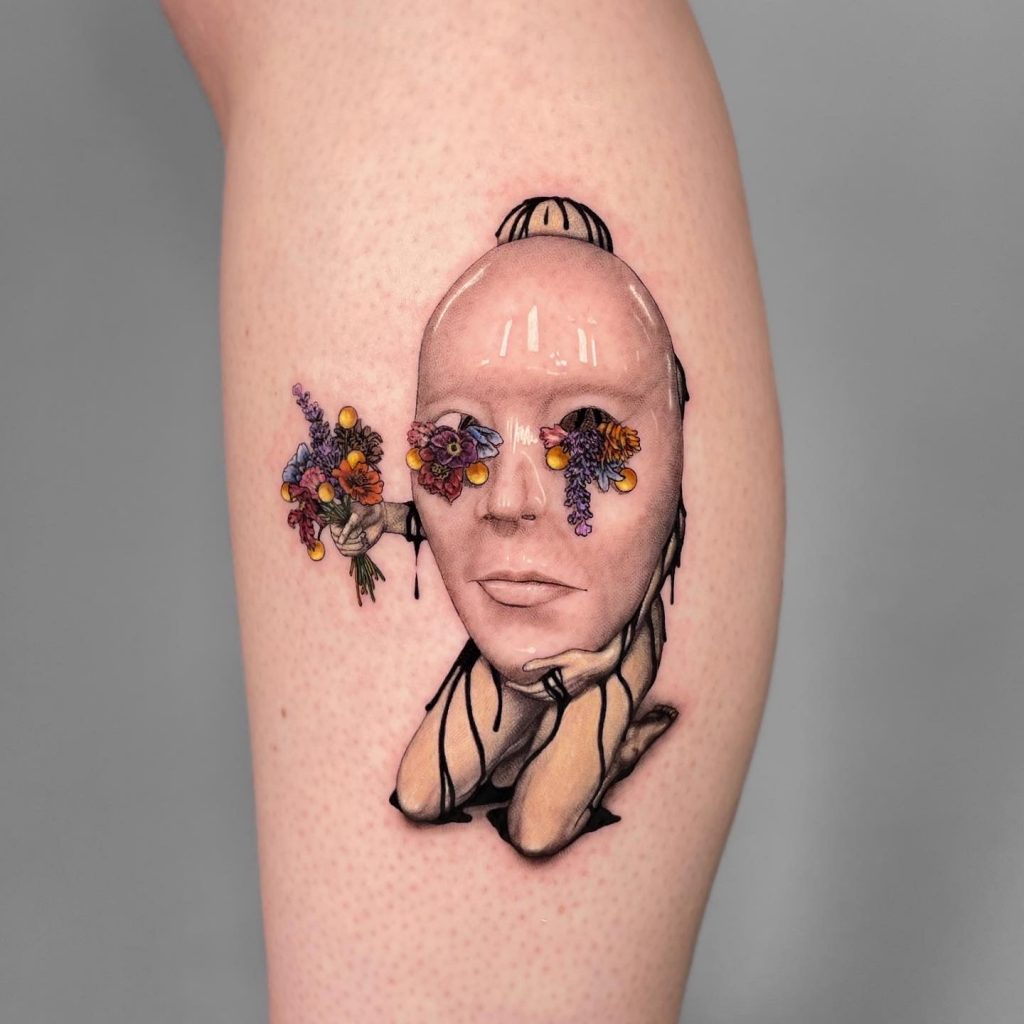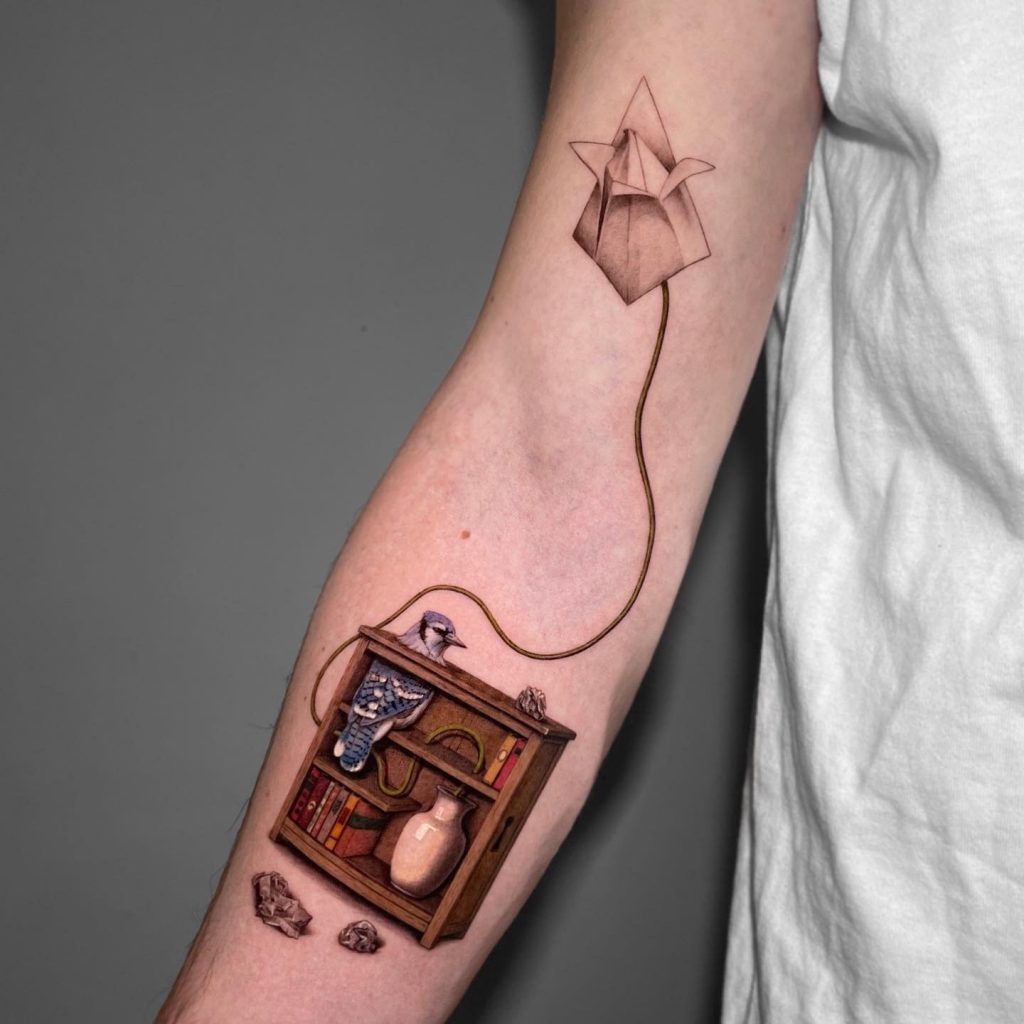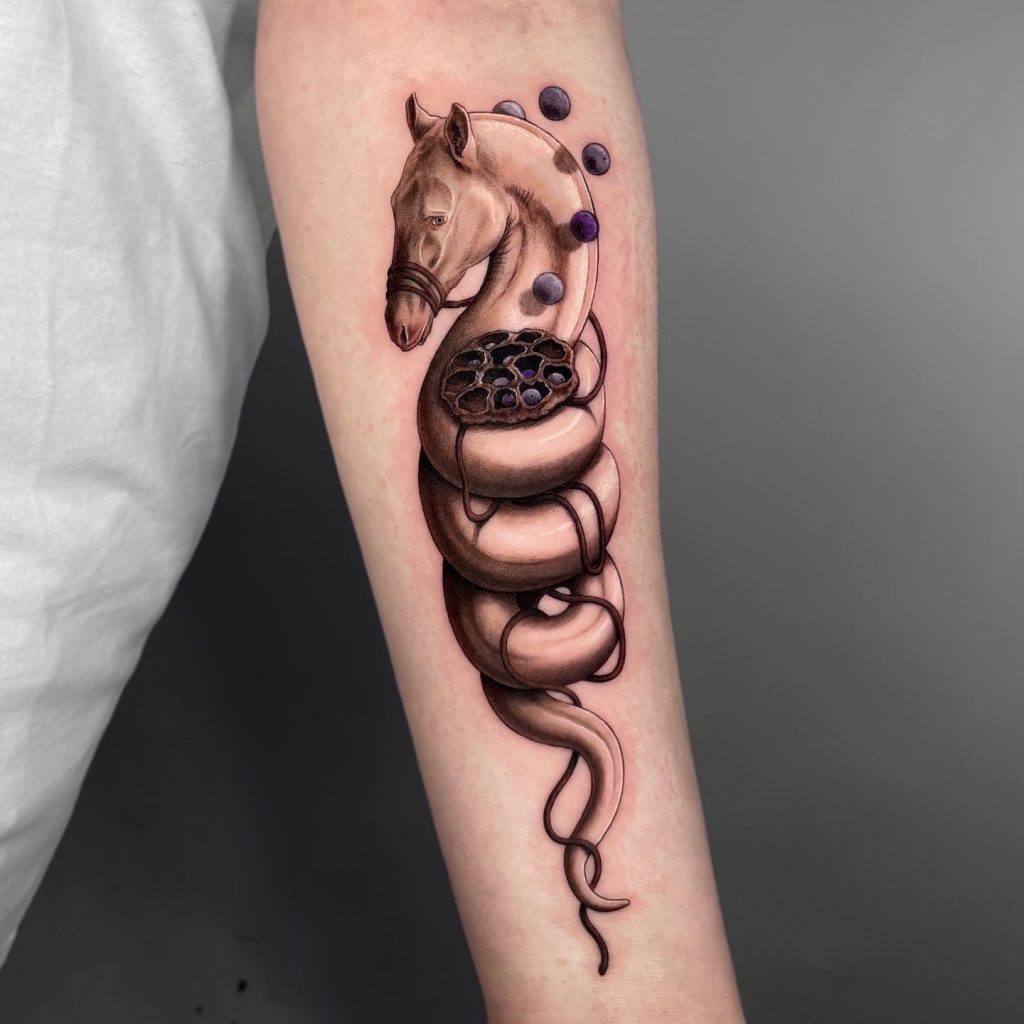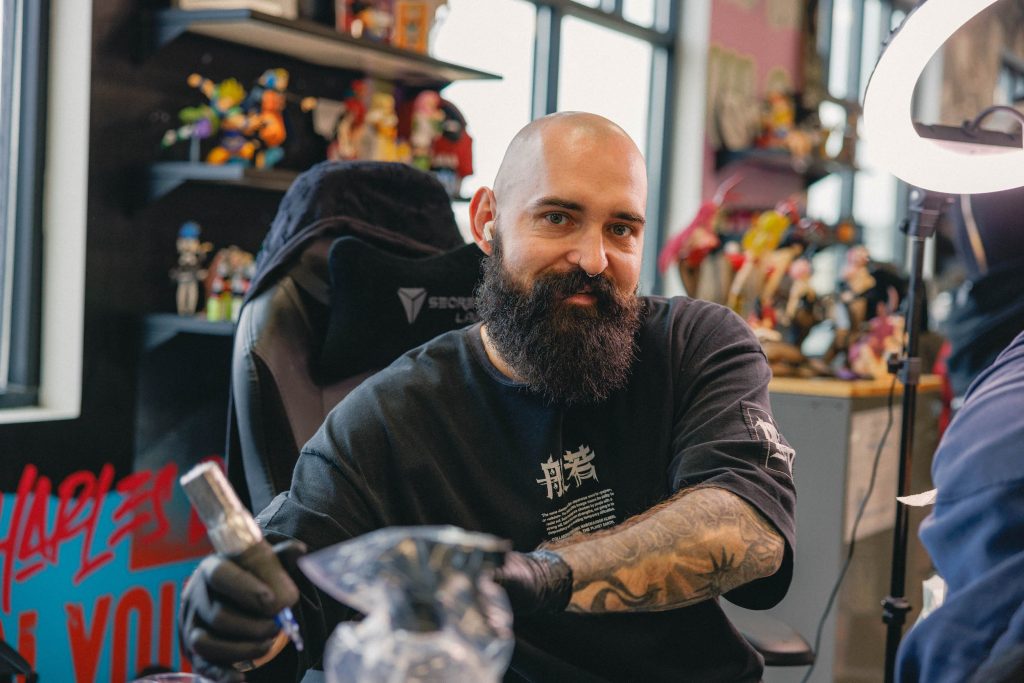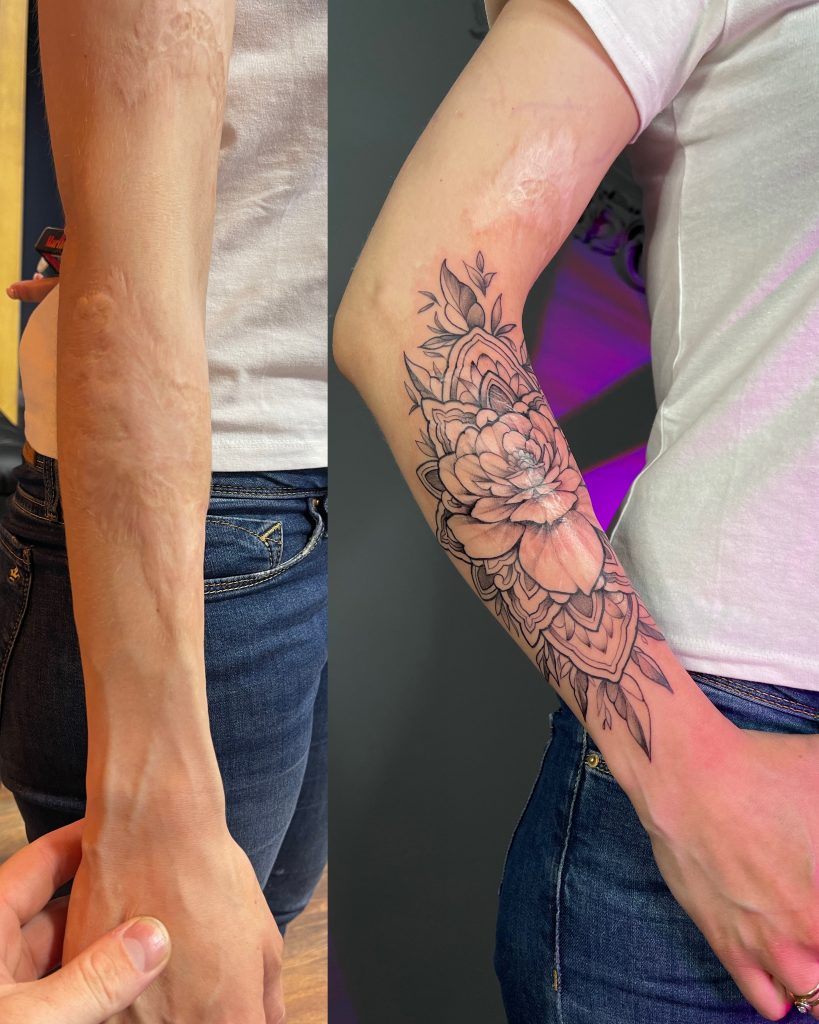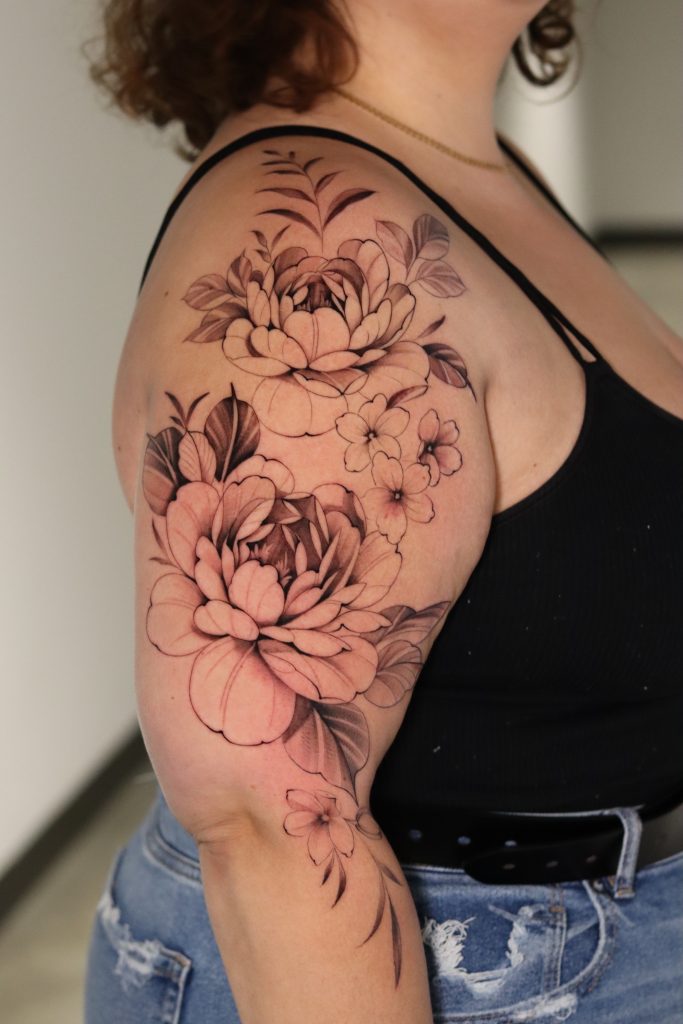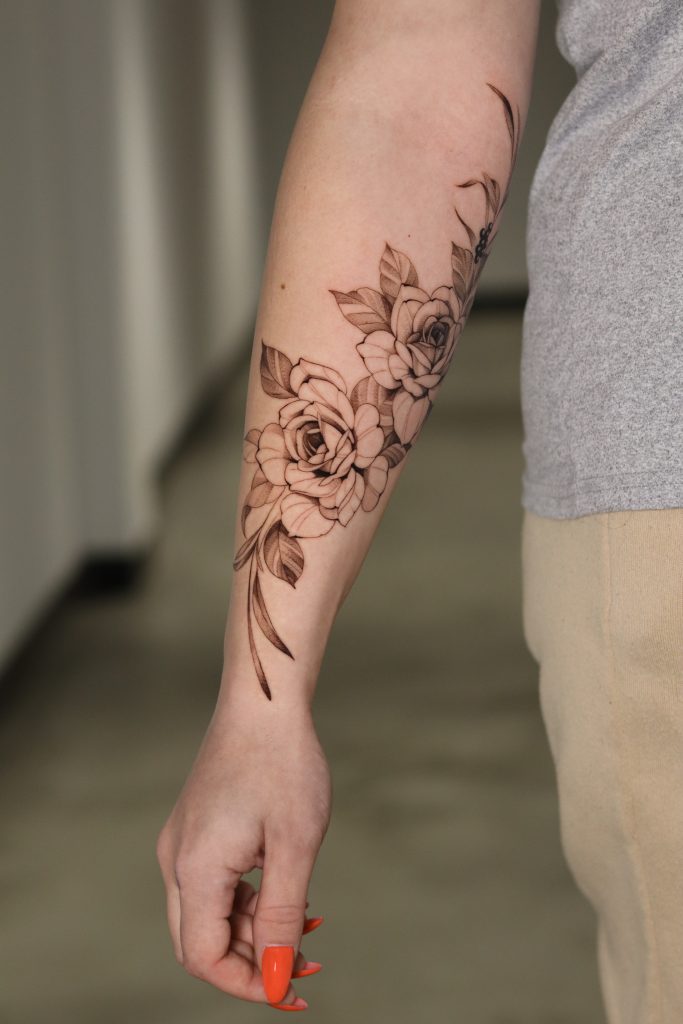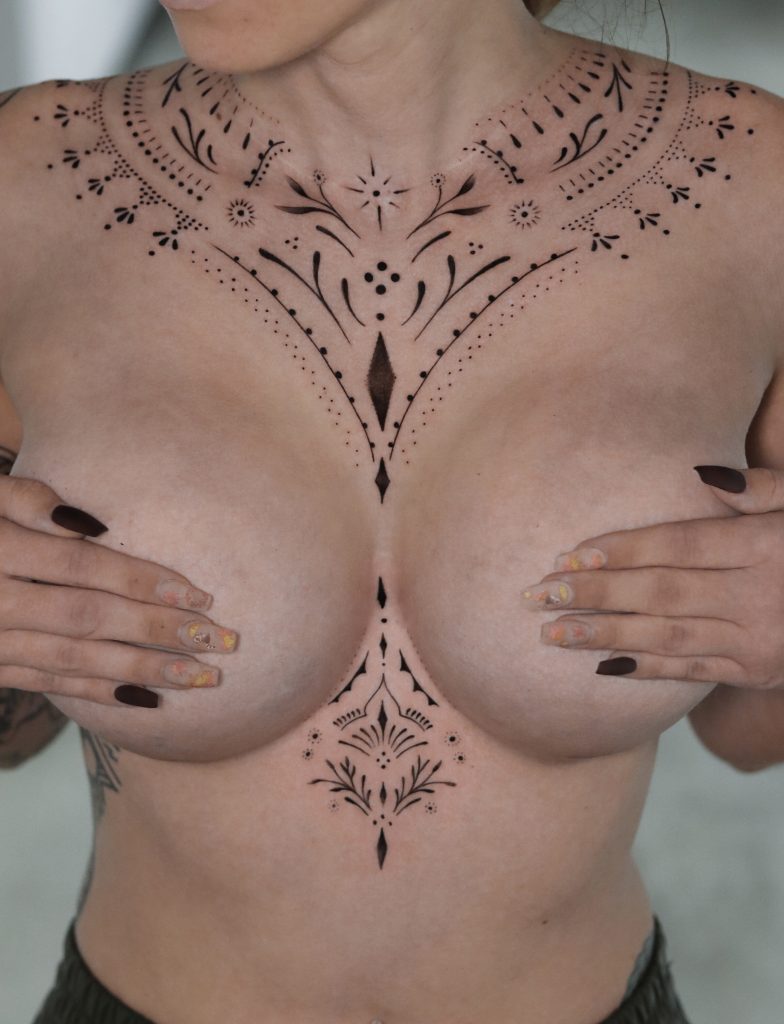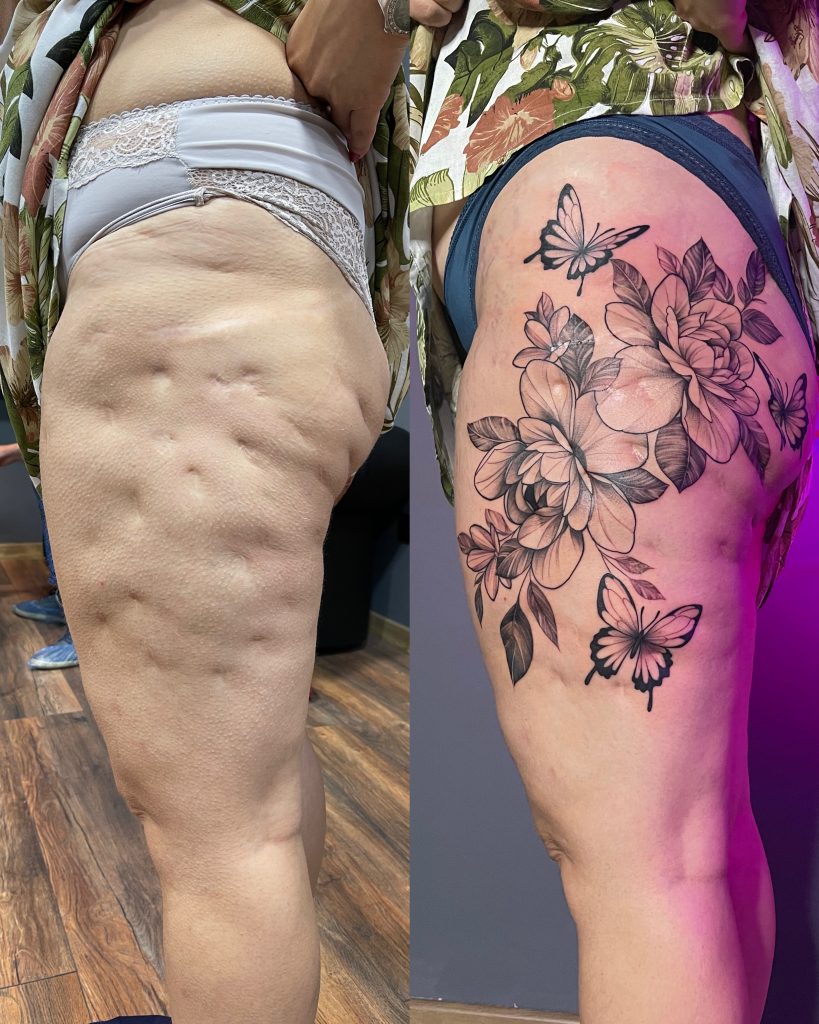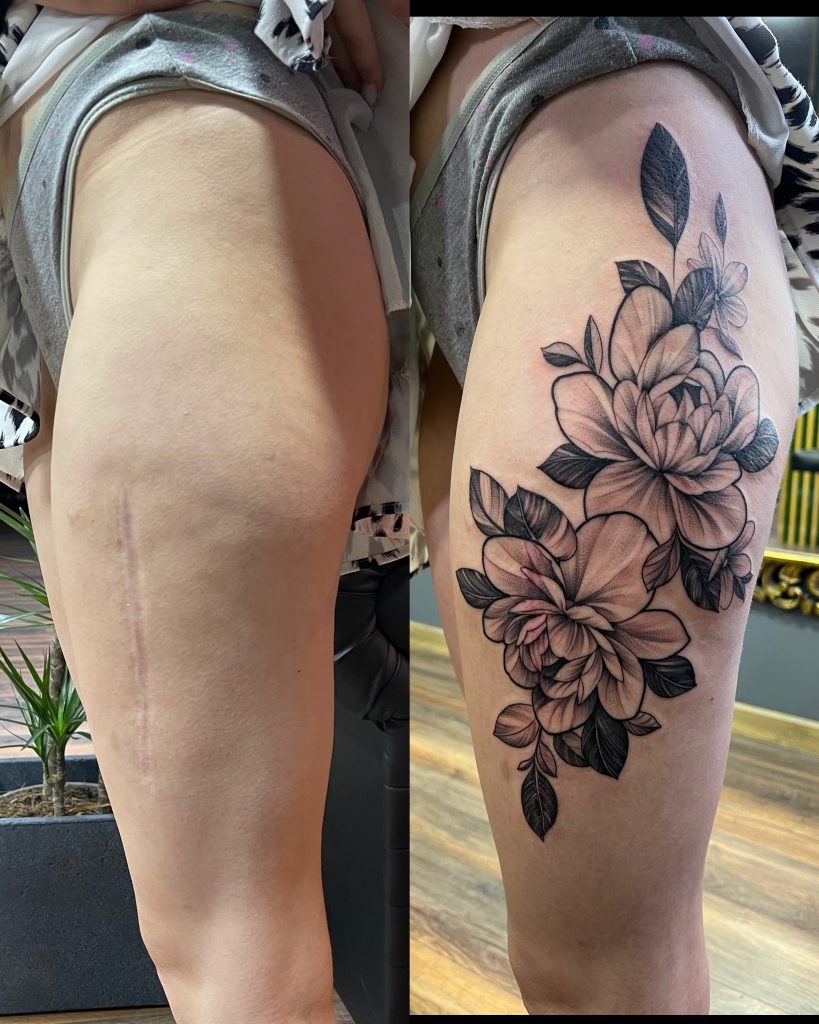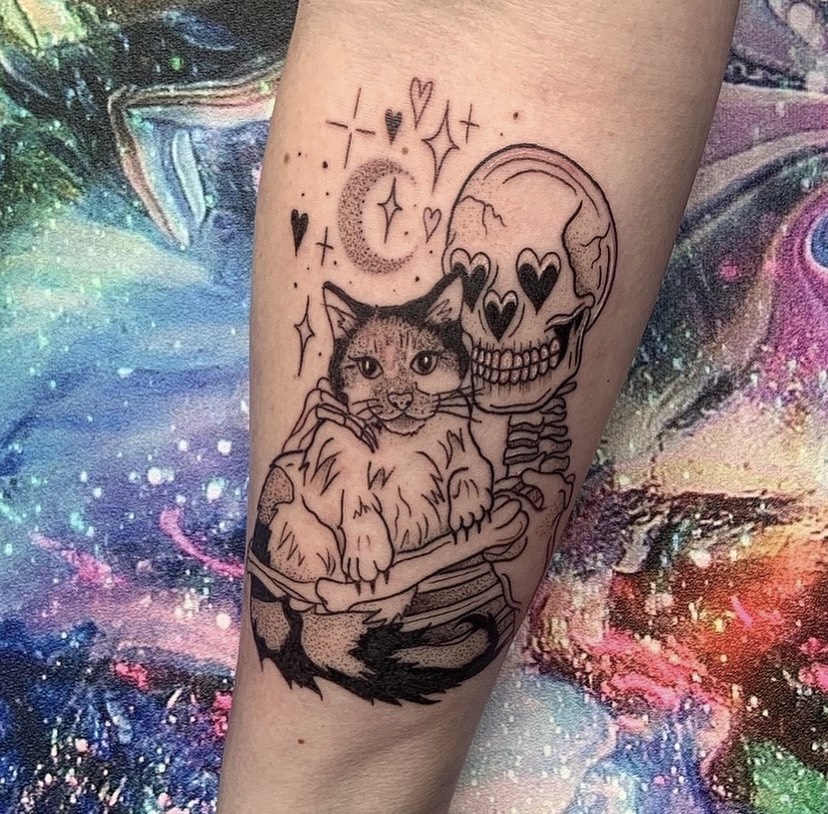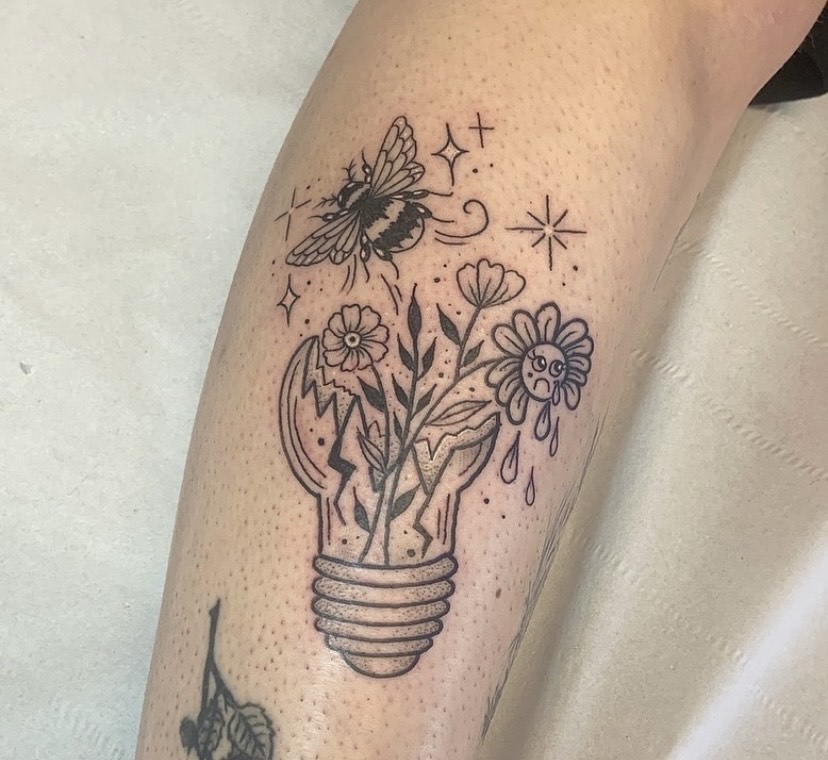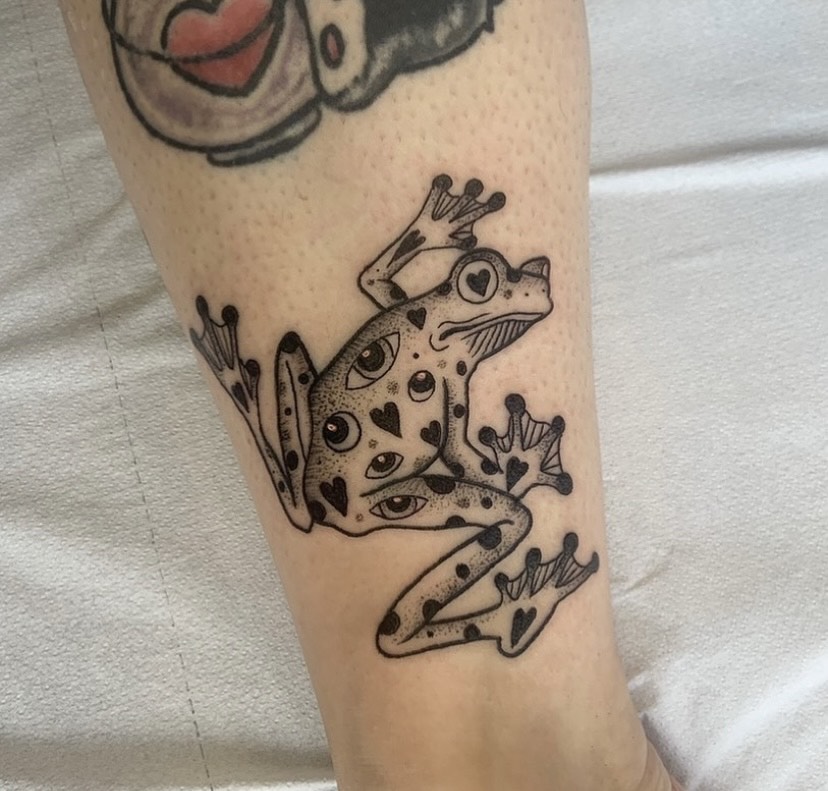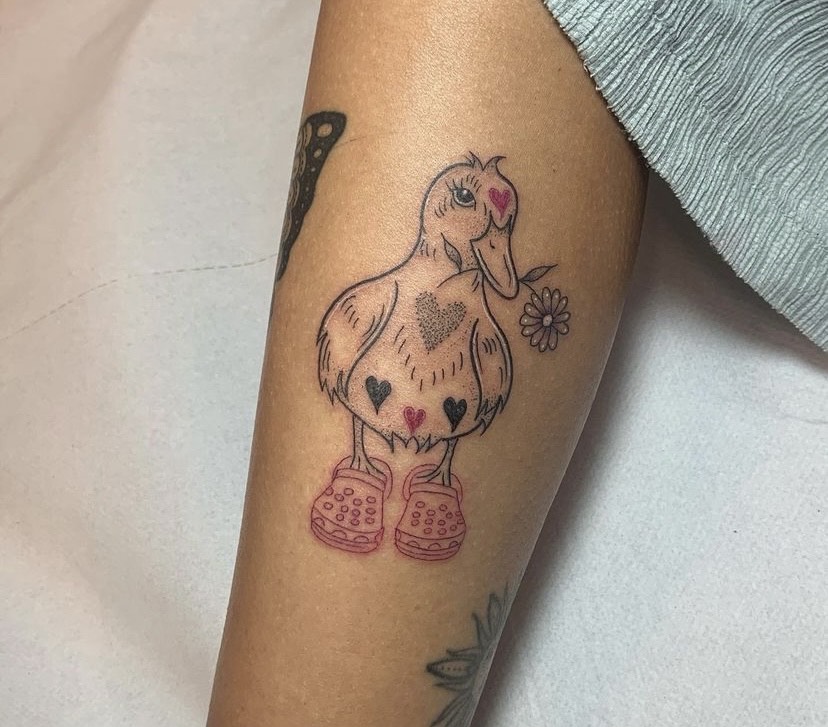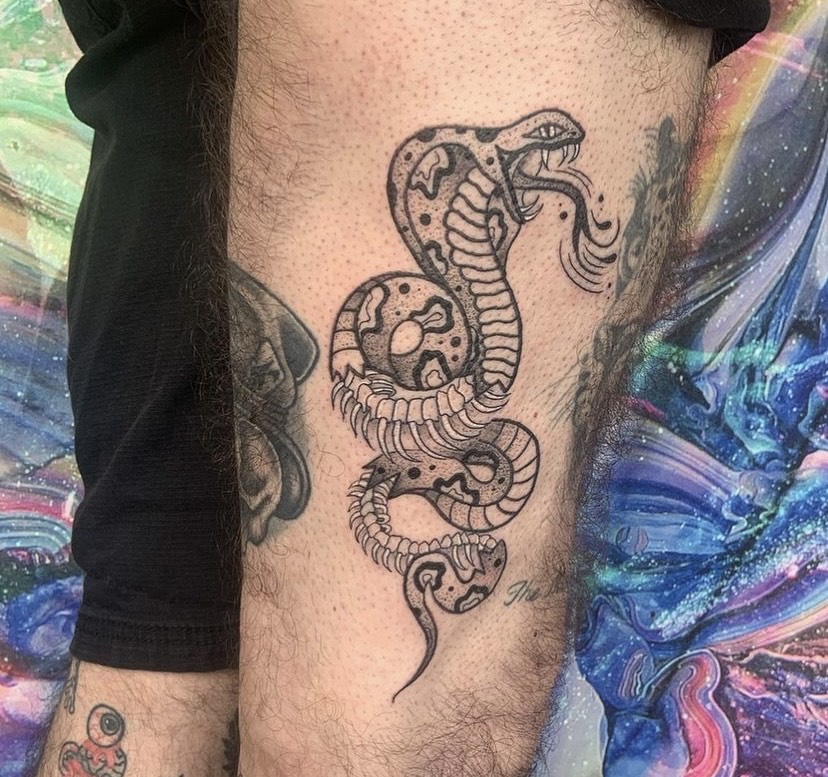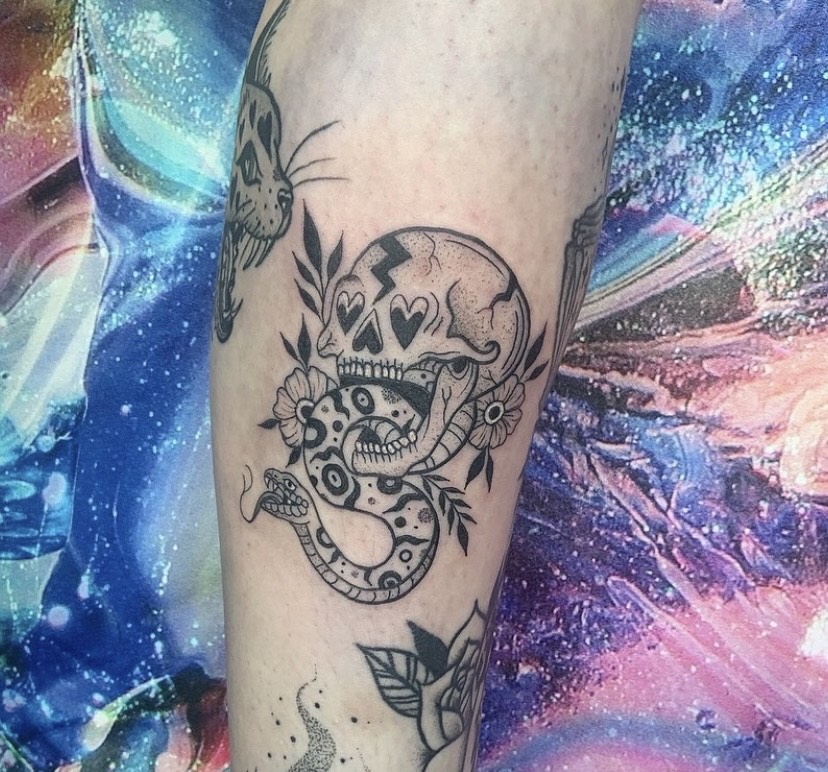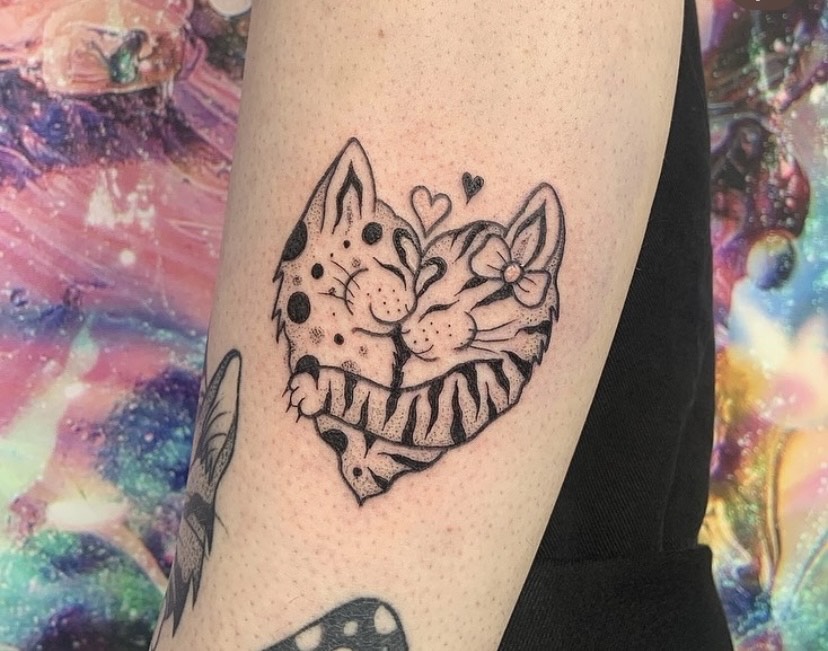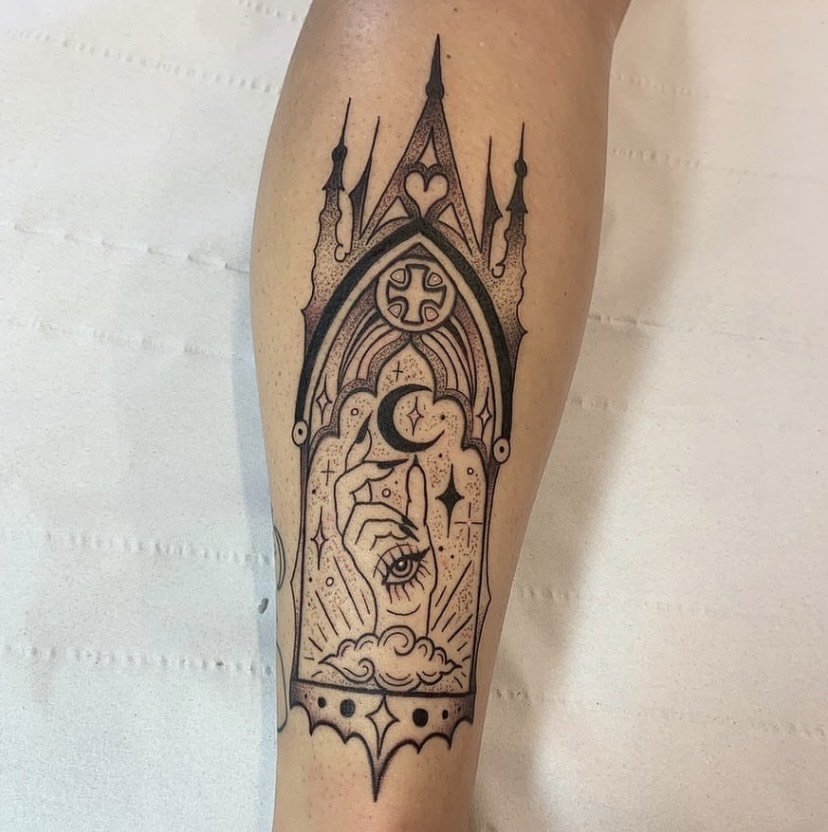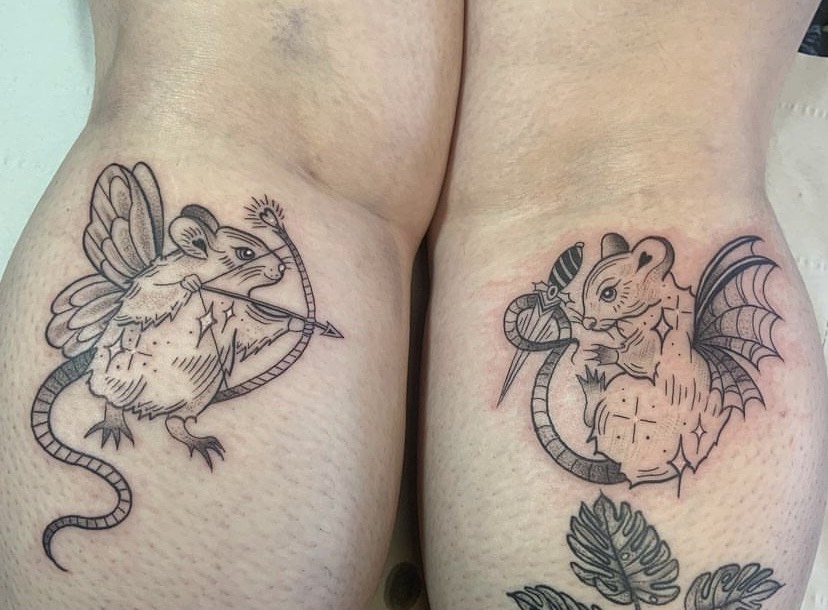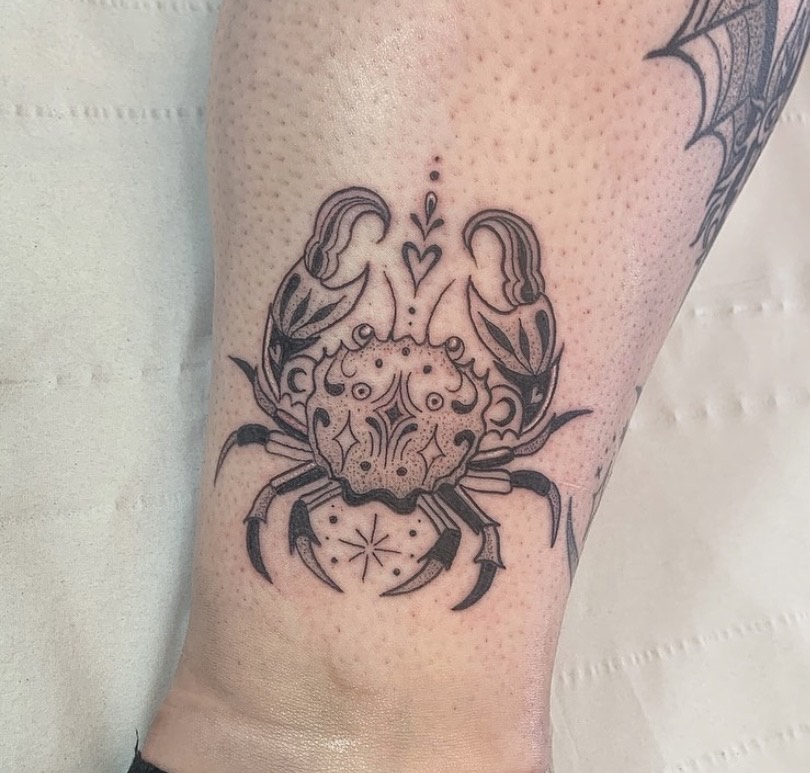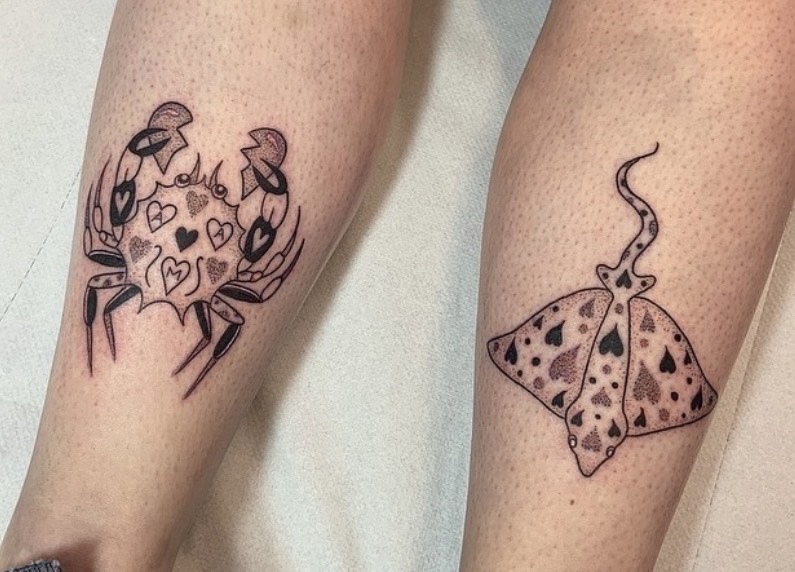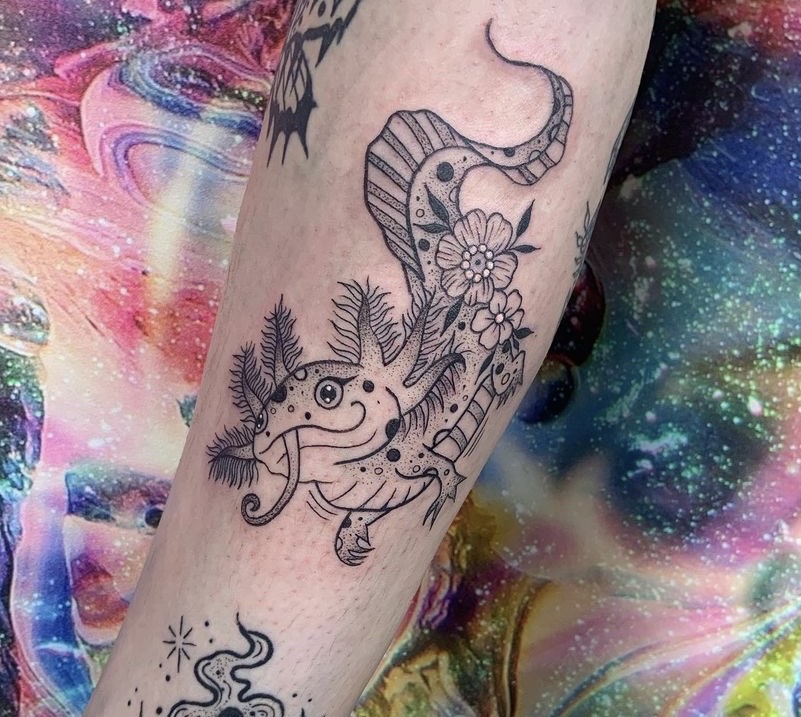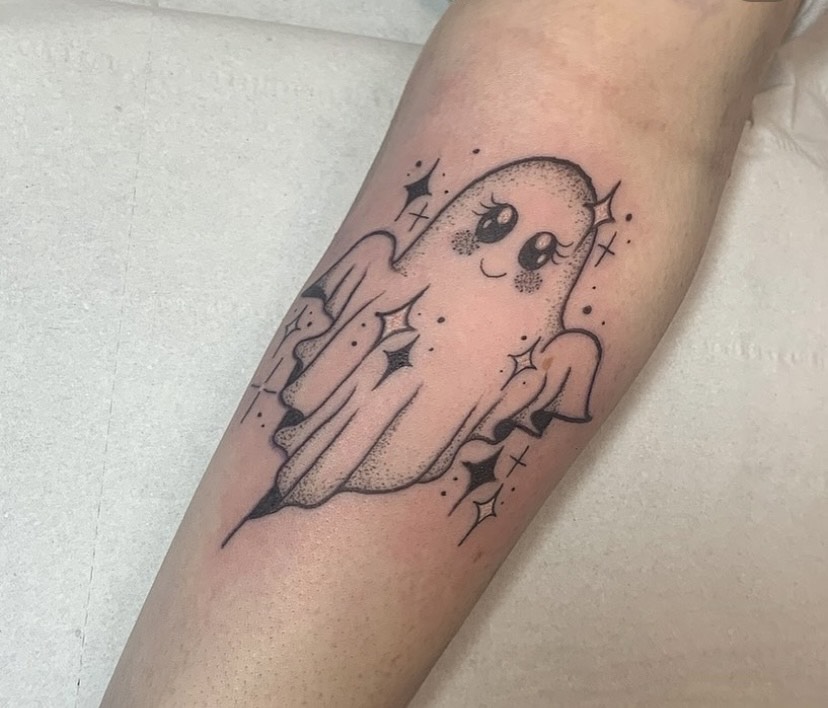When Korean tattoo artist Chou (@chou_tatt) was becoming curious about the wider world, a serendipitous email landed in her inbox from Chronic Ink tattoo shop in Toronto, Canada. She grabbed the chance to work there without hesitation and moved from her native Korea to her current home of Canada. Here she shares more about her tattoo journey…
What first made you fall in love with tattoos? Do you have a strong first memory?
I first learned about tattoos when I was 16. The guy was a sort-of gangster, I supposed, but also an artist in the Irezumi genre – he always drew dragon faces. At that time, tattoos in Korea were associated with the underground culture of gangsters. I found it quite shocking.
A few years later, I came across a watercolour tattoo by a Korean artist named Graffiti. He gave his client a vibrant red plum blossom on their side. Seeing that artwork, I realised that tattoos could truly be beautiful art forms. This experience became the catalyst for my love of tattoos.
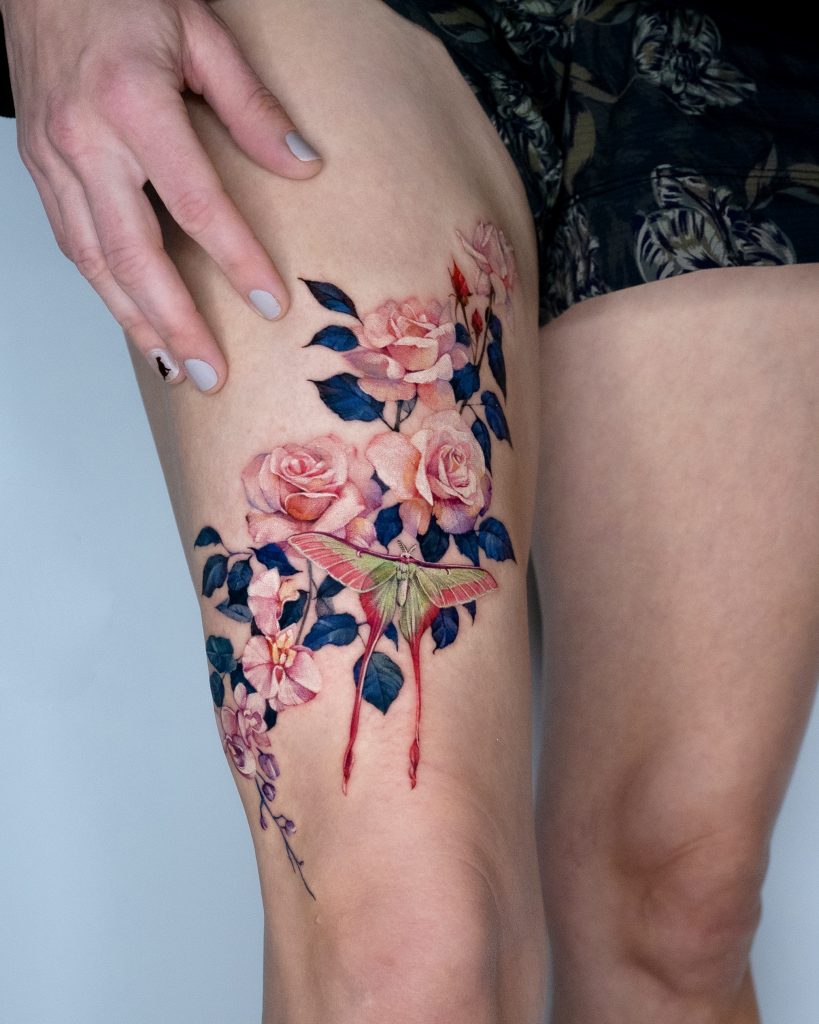
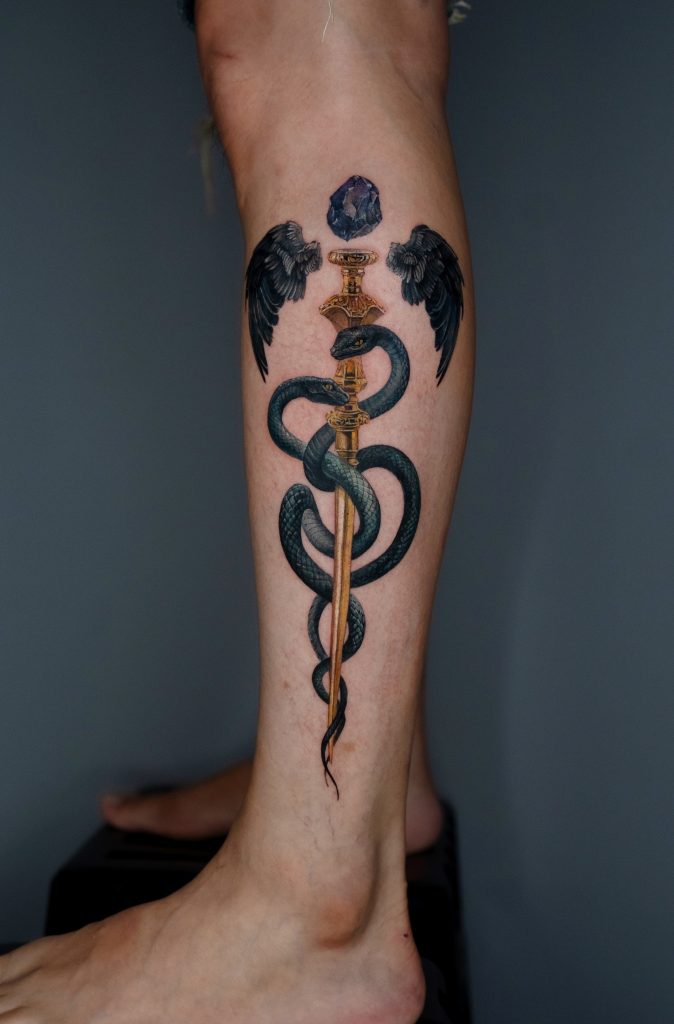
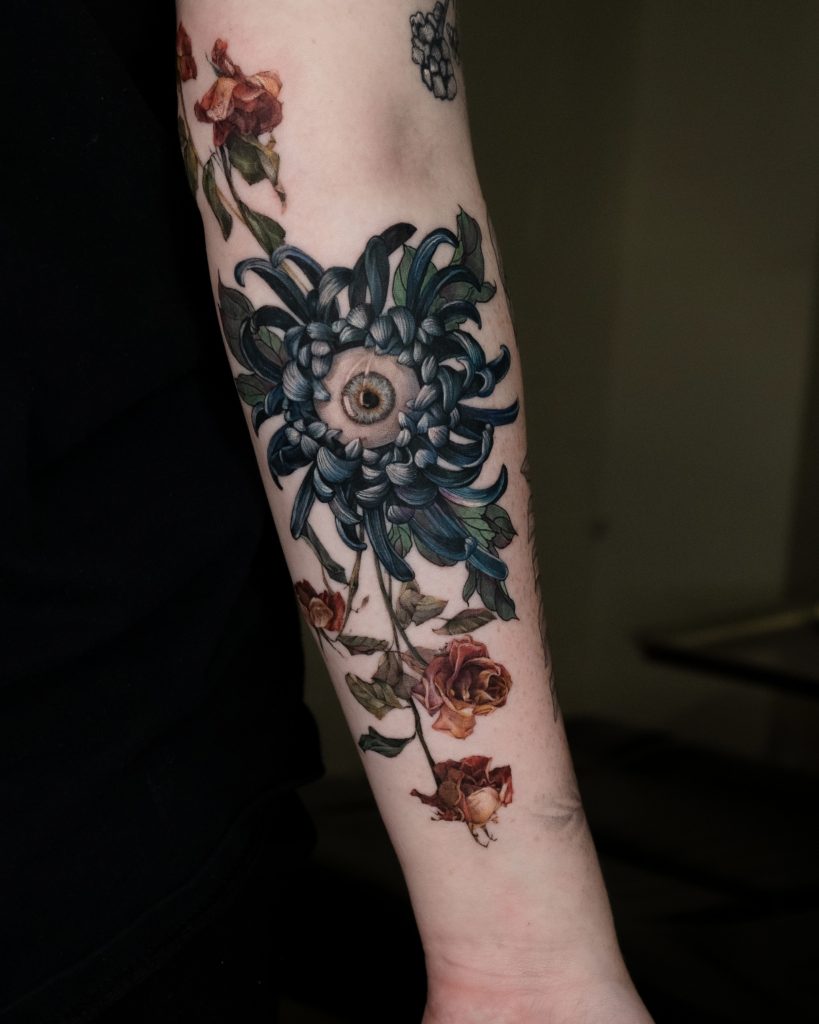
What made you want to become a tattoo artist?
The job seemed cool. The idea of giving people lifelong art on their bodies really appealed to me. Before getting tattoos on my own body, I wanted to understand the principles of tattooing. So, I started learning about tattoos.
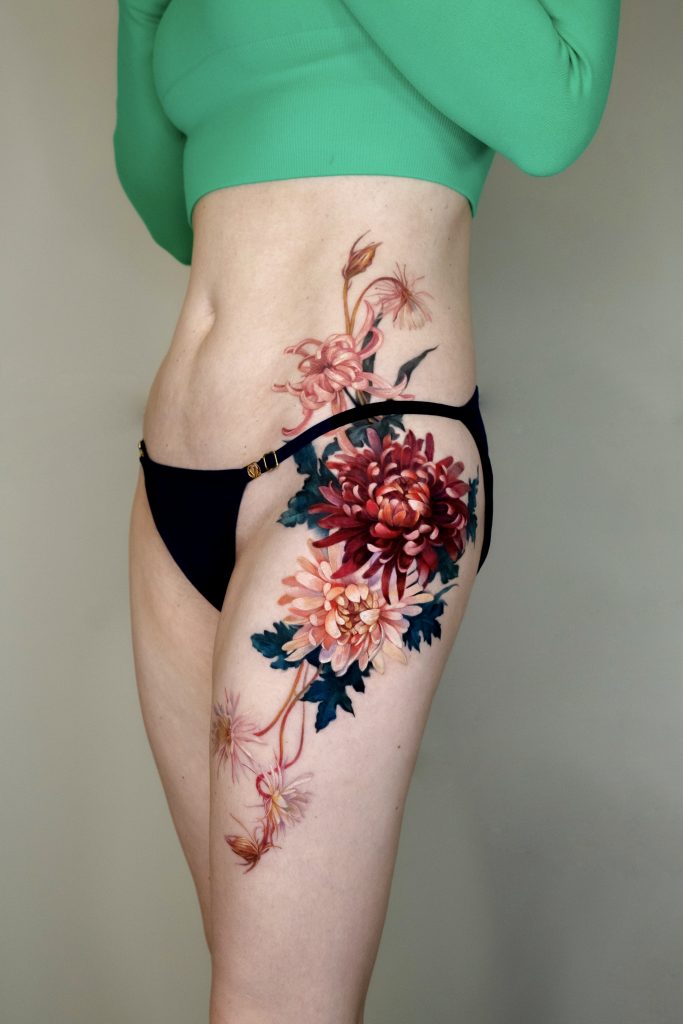
How long have you been tattooing for and how did you practice?
I think it’s been around five years now. I fell into the world of tattooing, and I’ve been searching for many teachers. I’ve had four tattoo teachers…
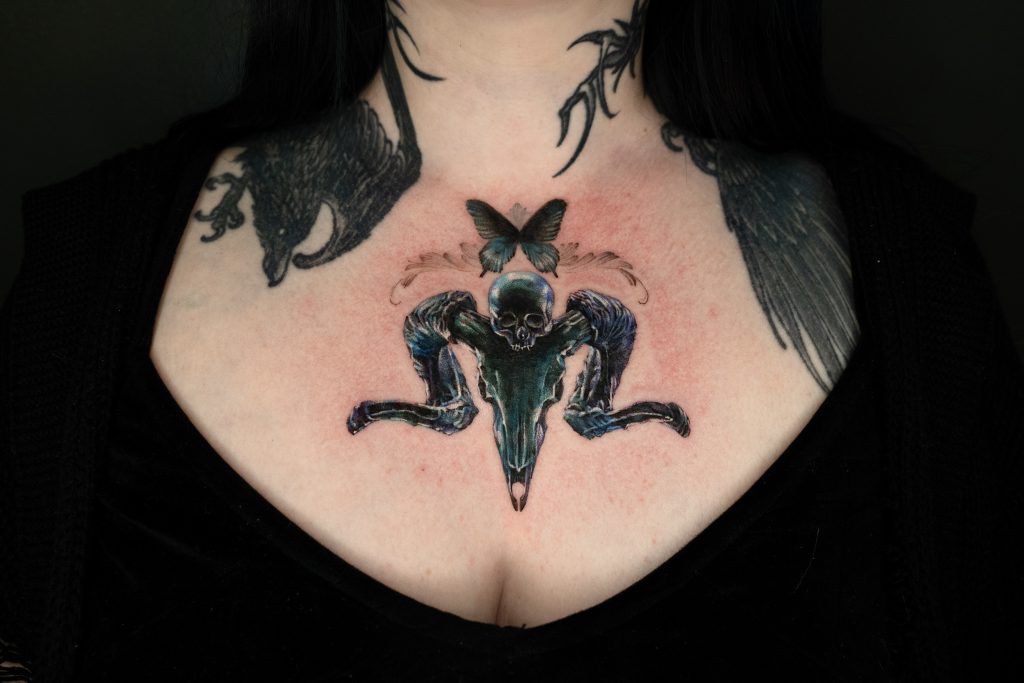
We absolutely adore your beautiful style, how would you describe it?
I’m an artist who uses rich and sophisticated colour palettes to beautifully adorn the body parts that customers desire.
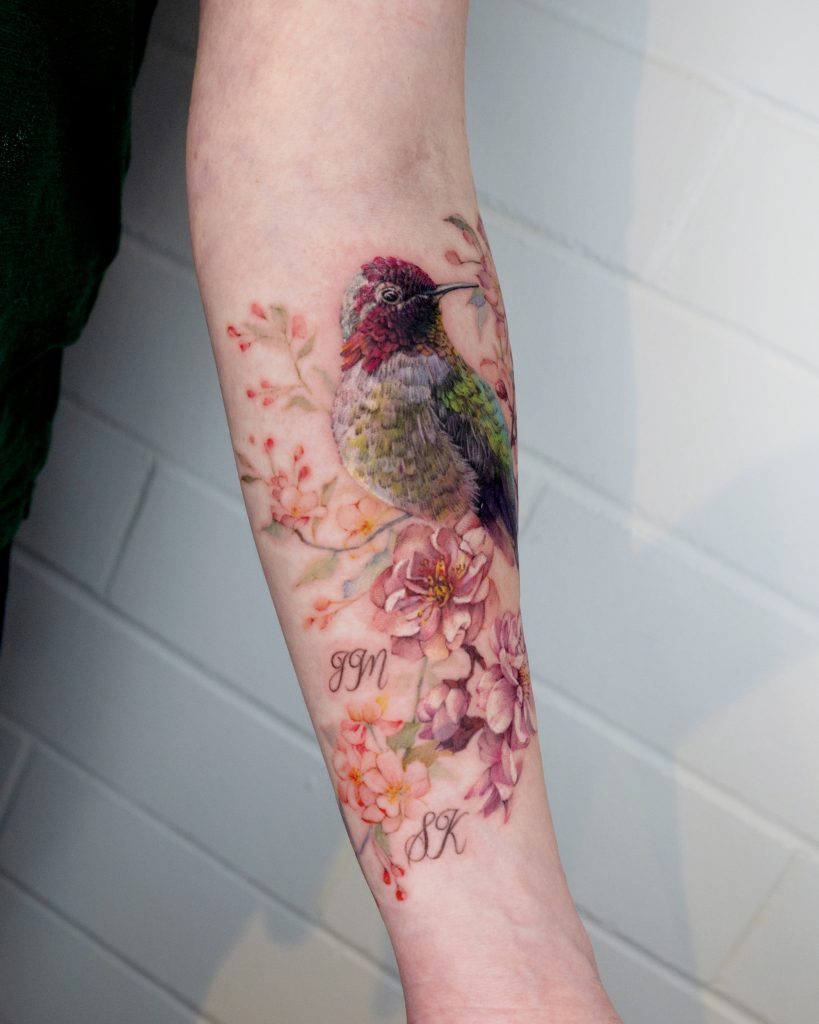
Where does your inspiration come from?
It seems like I always find something small in everyday life. When exposed to certain visual stimuli, I contemplate whether those elements can be expressed through a tattoo. If it seems feasible, I quickly jot down notes. When I feel the desire to create a design, I revisit those notes, allowing me to filter out the ones that align more with my criteria.
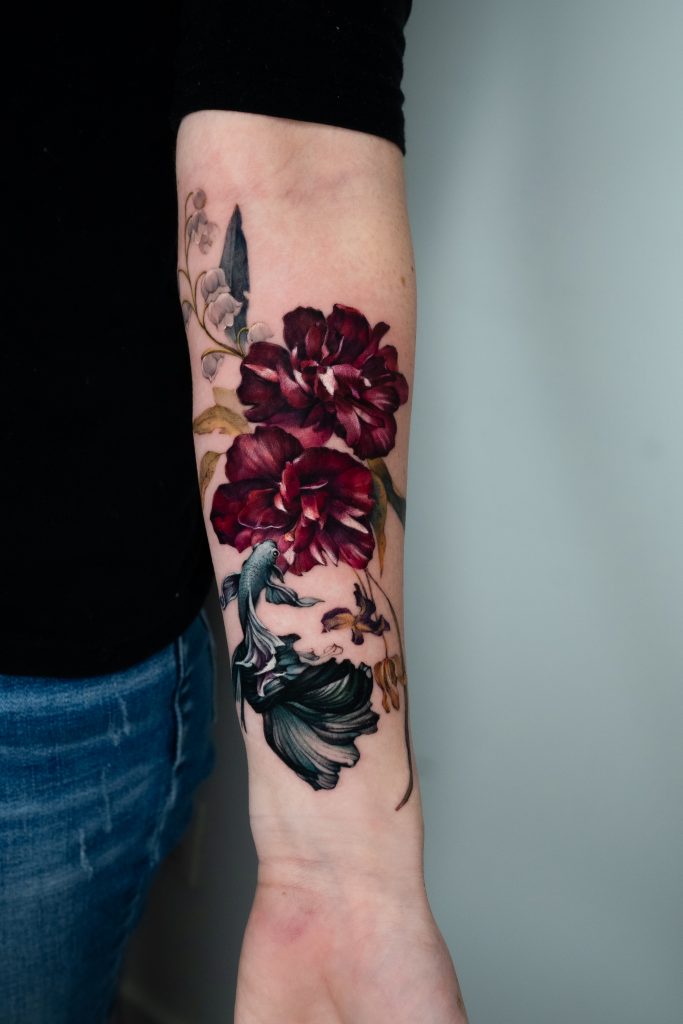
You’re currently based in Canada, what brought you there and why?
While working in Korea, I became curious about the wider world. The tattoo market in Korea had less demand compared to the supply. By chance, Chronic Ink – the shop I now work at in Toronto – reached out to me and I came to Canada!
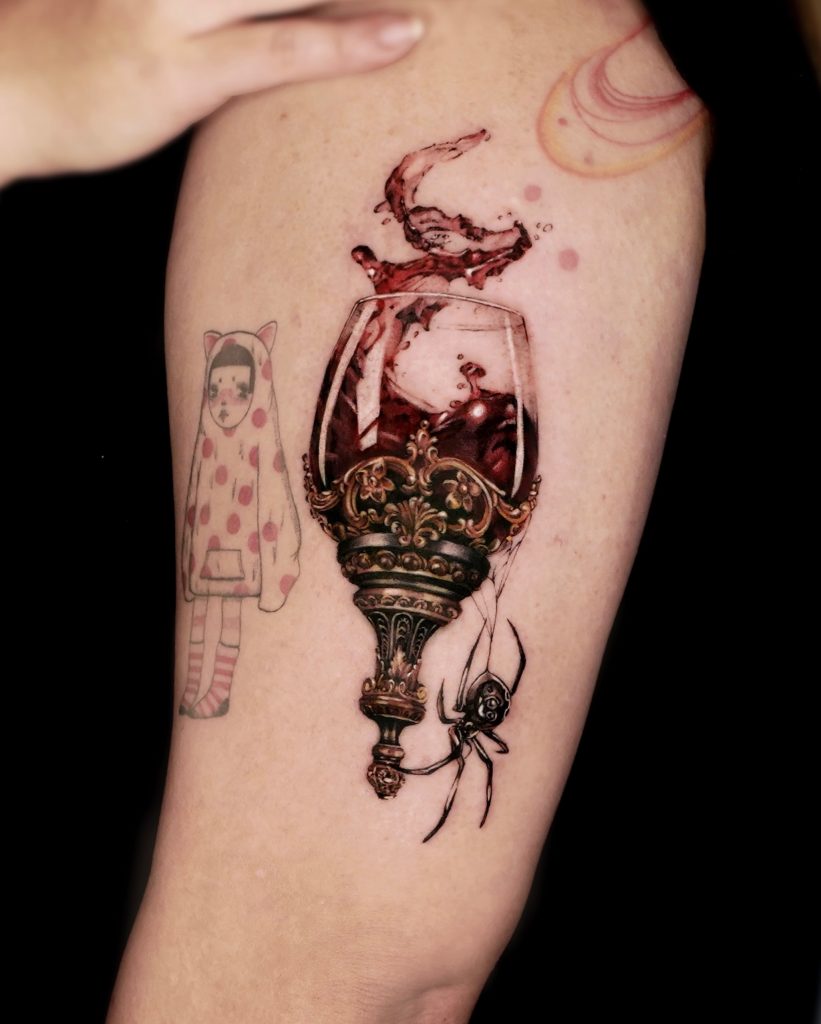
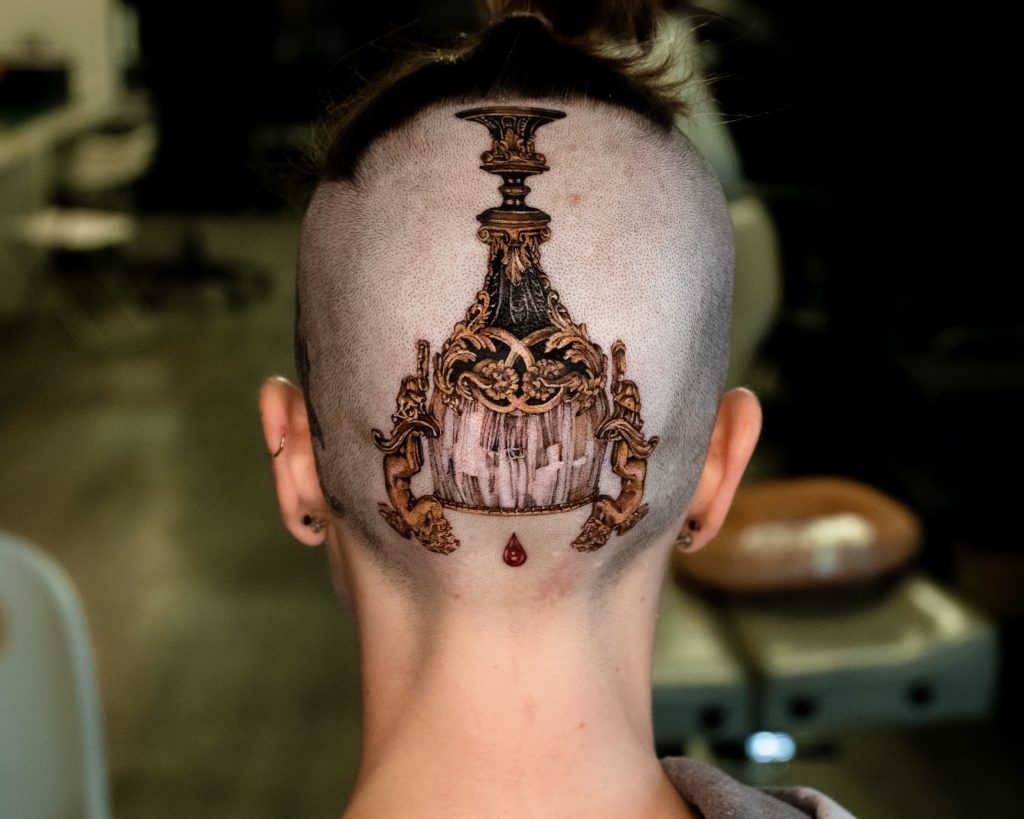
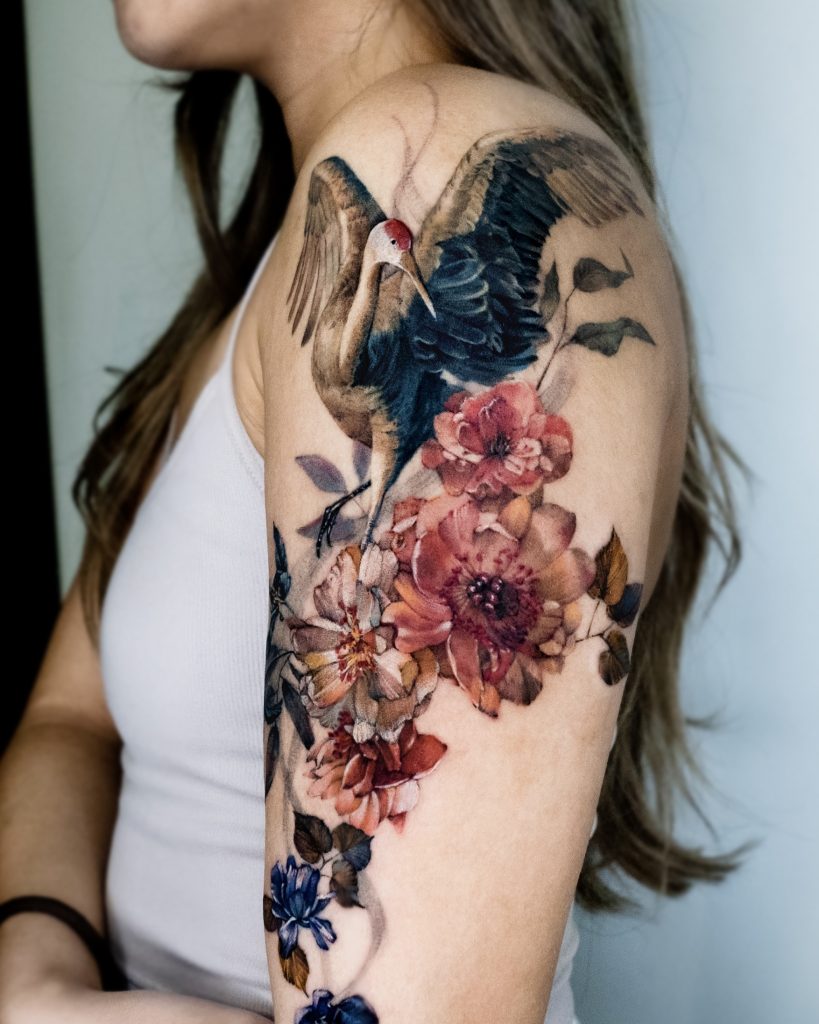
How do you like to work with your customers to bring designs to life?
It’s incredibly exciting when customers suggest interesting themes to me. Especially, the tattoo ideas featuring blue chrysanthemums, eyeballs, and pocket mice. These have been the most amusing topics in my life. When expressing my own colour palette with various themes, I fall in love with my job all over again.
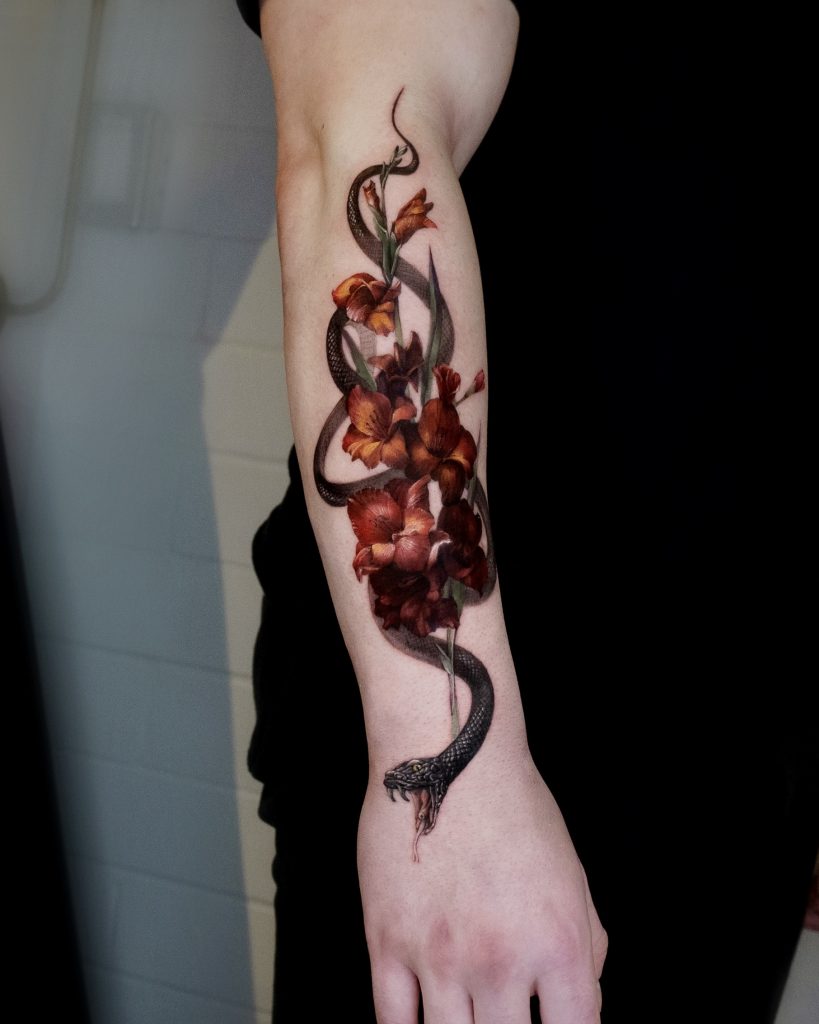
Is it a collaboration, or do you prefer to have full control of your work?
Well, most of my customers trust me completely. They simply tell me the themes they want, and there’s little to no need for further adjustments when I send them the designs. Thankfully, my clients genuinely trust and respect me.
If a customer has a firm idea of what they want, and it slightly differs from my opinion, I tend to show them a few examples to broaden their choices. Since a tattoo is something that lasts a lifetime once done, I consider this aspect to be very important.
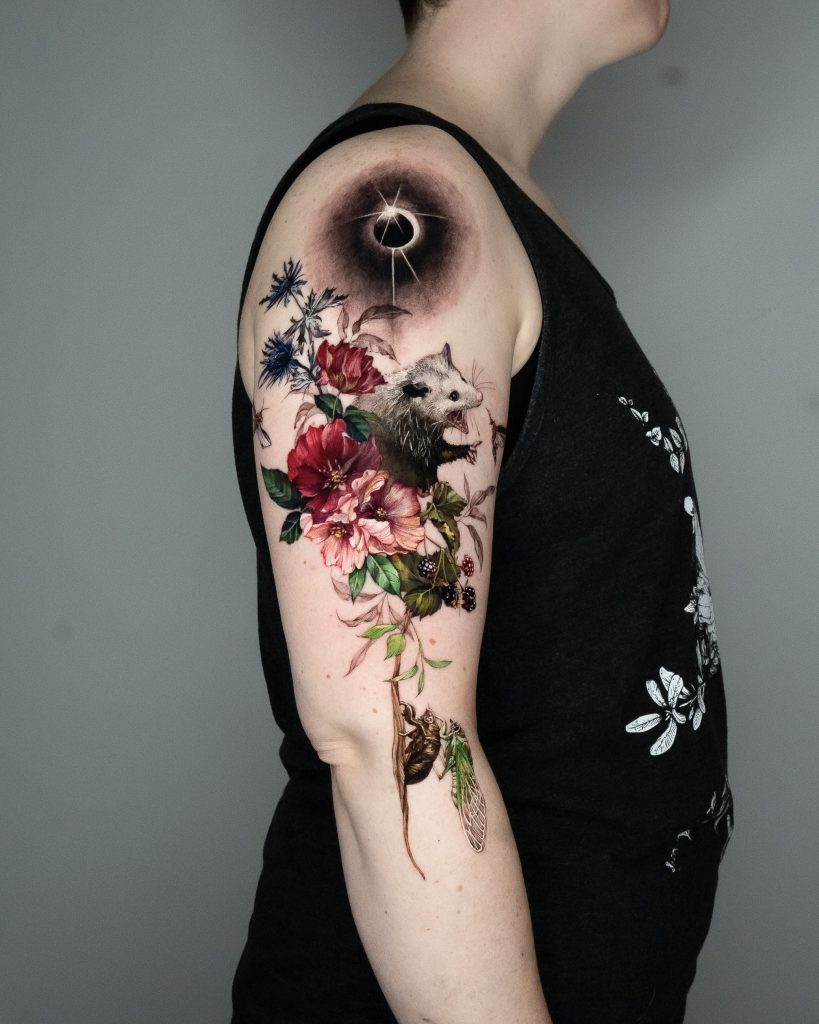
Do you tattoo flash pieces or mostly custom?
I like both, but working with flash pieces is a bit easier. That’s because the completed images are already visualised in my mind, and I just need to bring them to life. So, I sell flash pieces at a bit more affordable prices.
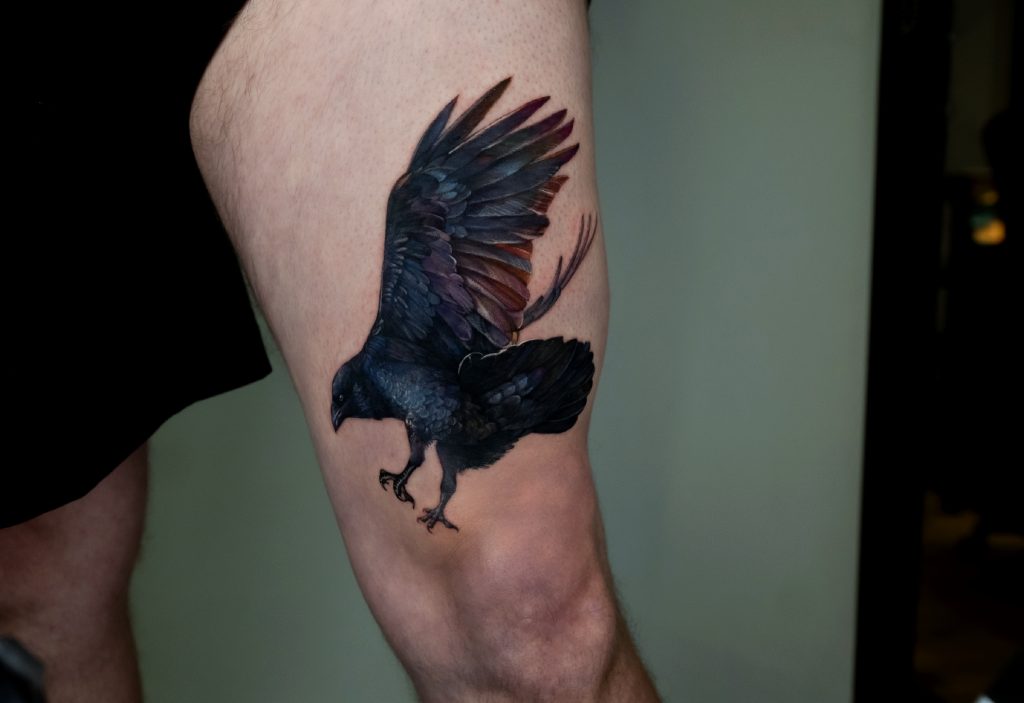
What are your hopes and dreams for the future?
It’s truly wonderful for me that my profession gives me happiness and I find joy in touching my customers through my work. I genuinely feel blessed. I hope to continue experiencing this happiness in the future and share it with others.
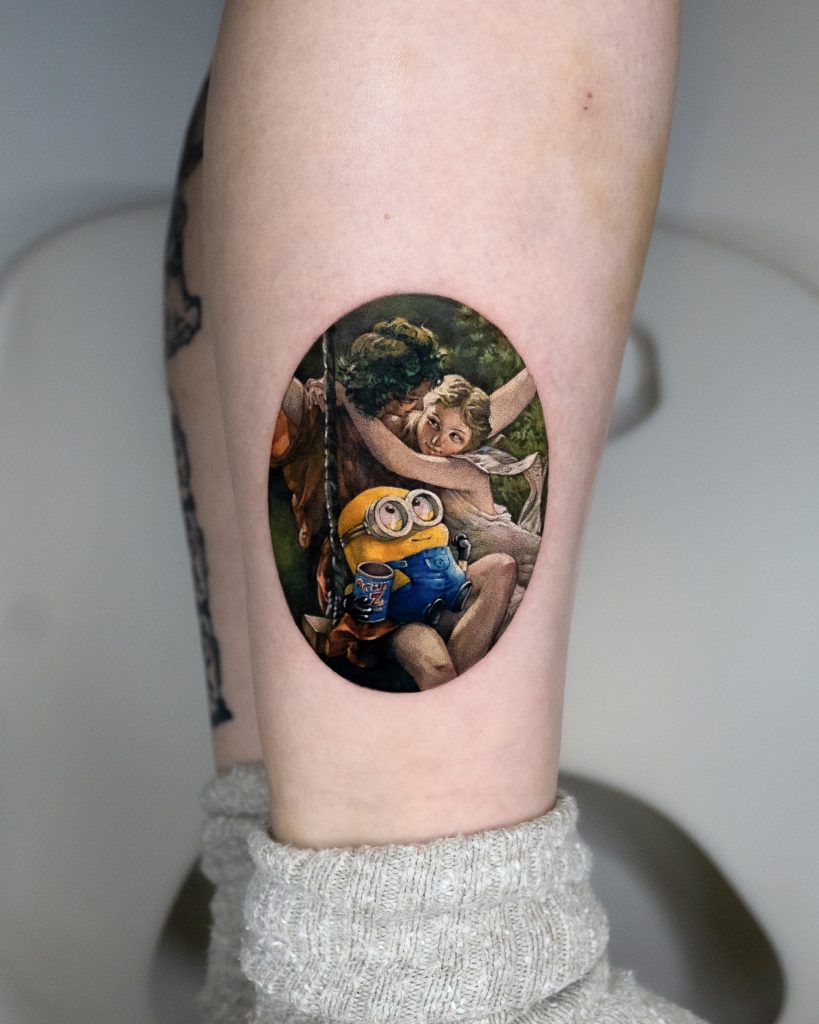
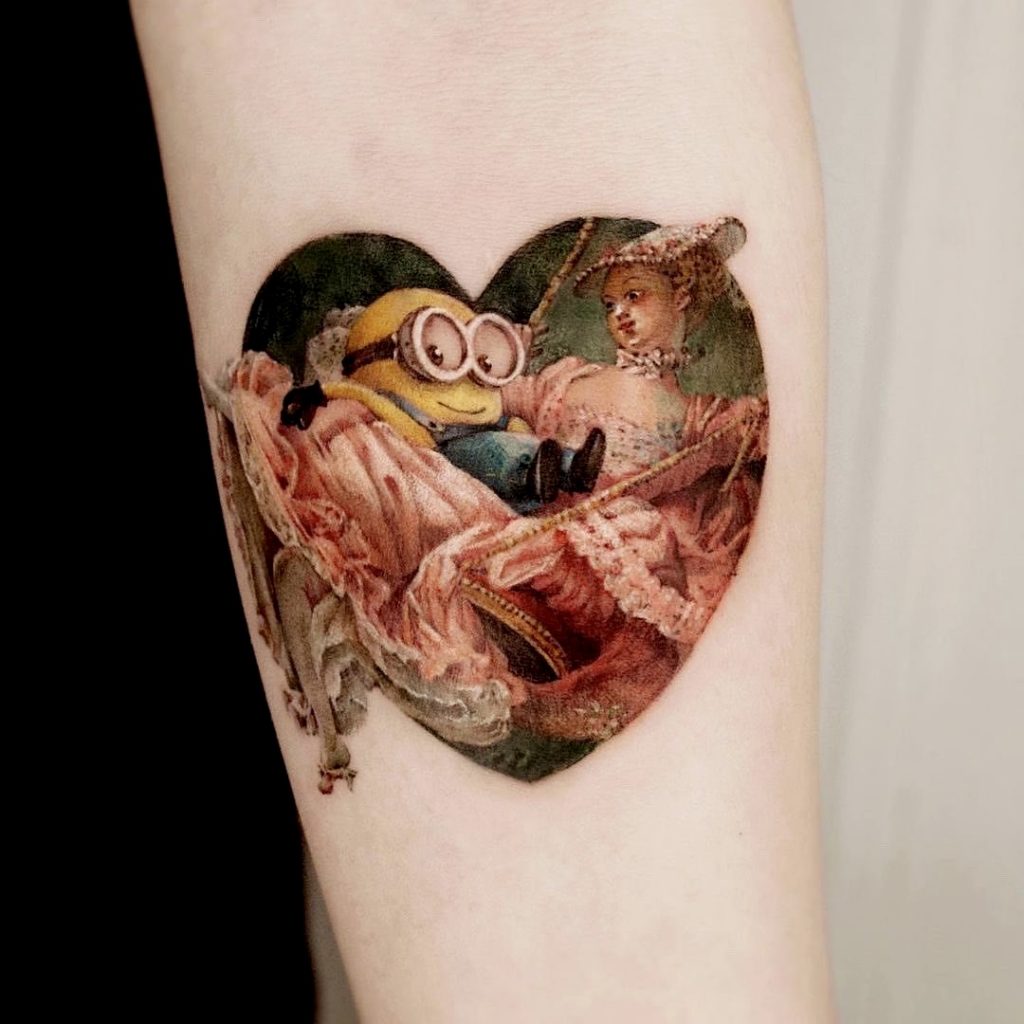
Do you have any plans to travel for guest spots?
I will be working in the UK and Germany from March. If anyone would like to meet me, please contact me through the profile link on my Instagram, @chou_tatt.
Be sure to follow @chou_tatt on Instagram and fill her guest spot spaces.
We’re always talking to amazing tattoo artists, check out our latest interviews.
